#i believe in star wars women supremacy
Text
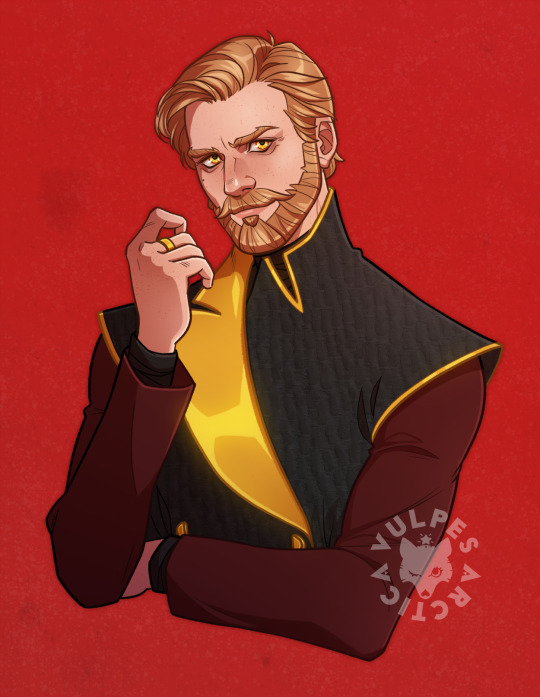
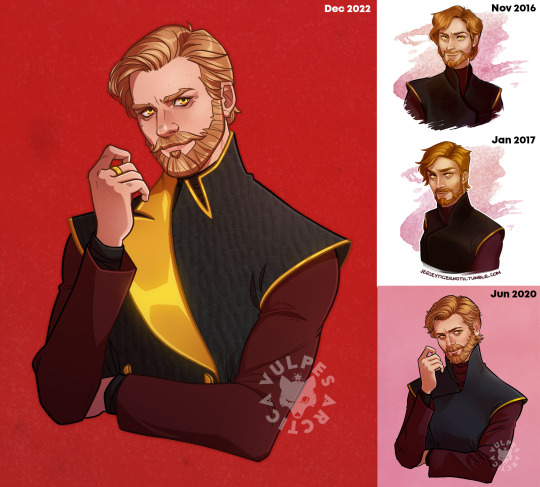
A late-entry 2022 update for Sith Obi-Wan! Recklessly provoked by @silmairon who sent me kind words about my art progress on the 2020 version. 💕
#my art#obi-wan kenobi#sith obi-wan#sith obi-wan kenobi#wicked thing#draw it again#art progress#star wars#prequel trilogy#to be fair i feel like the 2016 version isn't the greatest representation of my ability at the time#i'd just almost exclusively drawn women til that point so i had no fucking clue what i was doing lolol#also his new outfit is heavily inspired by a 2019 givenchy couture jacket#because as we all know sith obi is extremely fashionable and extremely EXTRA#one more thing: i believe in freckled obi-wan supremacy#ok im hitting post now
3K notes
·
View notes
Text
Ok another SU Hottake
Not that I don't think the Diamonds and Gem Society are purposefully and explicitly fascist, but I think people over-emphasize how fascist they are, like... aesthetically and therefore tonally.
Like they have a rigid caste and believe in infinite expansion and racial/speciel supremacy yadda-yadda, but like they're way more supposed to resemble a typical depiction of evil aliens then like say, The Empire from Star Wars. And I feel like that's why the show is fine for not treating the Diamonds with the weightiness of an overtly Nazi-like villainous regime, and more like a bunch of fucked up colorful space aliens. Like I think when people act like the Diamonds being fascistic means you're supposed to see them in the same vein as Nazis, they put way more pressure on the show to be more morally absolute than it literally ever wanted to be.
They are first and foremost, weird evil alien women whom are an odd spin on typical "aliens invading earth" narratives. Then, they are meant to represent oppressive and stifling systems both structural and interpersonal as an antithesis to the story's themes of self-expression and freedom. Then FINALLY, because of a collection of that along with a wish for interesting world-building, they are a fascistic empire.
Problems with how the Diamonds and their Empire were treated from a sort of political analysis lense are like the only valid critiques of the series I've ever seen, and like I'm saying here, I still think even they often misinterpret the show's whole vibe. I don't blame people for being wary given recent cultural and political movements that started in the middle of the show's run, but people can still be just a BIT more careful with media analysis. Especially with a show that was so whole-heartedly dedicated to progressive causes.
#steven universe#gem society#the diamonds#su#rebecca sugar#didnt mention them by name but yes this is about them being called a nazi#multiple times#shut the heck up#essays and rambles
23 notes
·
View notes
Note
i really dont wanna annoy you but you post about racism in fandom sometimes so i thought you'd be the right person to ask. i hope this doesnt come off as expecting u to be my teacher. yesterday someone said they didnt trust white zk shippers and i thought it was mean but then people started sending the them all these nasty messages and i started to worry maybe op was right. honestly a lot of this stuff is pretty new for me. i think our fandom is inclusive & unlike the rest of the atla fandom we actually like katara. but i'm trying to learn.
why would it be a problem that a lot of zk fics have katara looking after zuko? i always just felt like he needed it more bc he was abused and kataras better at dealing with feelings and she's good at taking care of people. is fire lady katara still ok? is there racism in our fandom? there are a lot of woc zks and i've seen them get hate for it. but the messages op got were pretty bad too. i know i'm asking a lot of questions i just hate the thinking that we might be as bad as the z*kka stans have been saying all year.
This is gonna get long so I’m just gonna jump right in. When I listened to fansplaining’s episode on fandom racism one of the guests said white fans who can acknowledge that fandom racism exists tend to frame it as “just a few bad apples” and get caught up in worrying about not looking like a “bad apple” instead of making fandoms spaces that aren’t hostile for BIPOC. Jag offs hiding behind anon to tell women of color who ship zutara that we have a creepy fetish for imperialism and colonialism suck, but your biggest concern really shouldn’t be the optics or if you can claim superiority over zukka stans.
Yeah the “katara’s a homophobe” nonsense didn’t come from our end of the fandom, but it feels naive at best or dishonest at worst to act like the zutara fandom is uniquely immune to fandom racism. A creator I follow made the excellent point that allyship conditional upon if a poc talks "nicely" about racism is still white supremacy. I believe poc need to be allowed to vent and be salty or angry without being tone-policed. I definitely have my days where I’m like “ugh white people,” or "why must white fans be like this," so I get where the OP was coming from. Ironically the folks that sent them anon hate proved their point. You can always count on hit dogs to hollar.
Fandom is only escapist for some people. It doesn’t exist in a vacuum so you’ll find racism in fandom because there’s racism in the world. Navigating that gets exhausting. There are certain things I enjoy, but for the sake of my sanity I'll only talk about it with friends in real life or only follow fans of color. Before I follow white fans I need to see first that they’re not the kind of person who inspires posts about fandom racism. A good friend of mine loves Star Wars, Kpop, and gaming but after years of attempts at calling in she decided that she’d only interact with woc in those spaces. Again, you get tired.
ATLA wasn’t on my radar until last year so I definitely haven’t read every zutara fic out there but I have noticed a lot of fics do tend to have Katara being the one comforting and supporting Zuko. It’s not inherently wrong of course, it’s just in the grand scheme of things in fiction woc are often cast as eternal caretakers and confidants in fiction:
“How characters of color are portrayed in fanworks, especially fanfiction, is worse than the actual films. They are portrayed as supportive, almost invisible understudies. Any characteristics which they possess in the [MCU] films are stripped and given to other white characters. It is not only erasure. It’s a theft of identity.
Characters of color are positioned within storylines to support the main, white characters. Even within the slash biracial pairings, the character of color is underdeveloped and in a position of servitude within the relationship.”
TheNavyLanguage, Fansplaining
As the quote above points out this honestly happens in a lot of fandoms. I’ve read fanfic for books, movies, tv shows, and comics and I can’t help but notice that in fics the writers often have the non-white character or-- if neither character is white--the darker skinned character being the care-taker, the bodyguard, or the person who is performing all the emotional labor. It’s not inherently wrong to have a character of color have a nurturing personality, you just have to remember that since Black and brown folks have been saddled with narrative after narrative where we exist to serve leaning into dynamics where the non-white or darker skinned character is providing all the emotional support and getting very little in return has some unfortunate implications.
It’s not better if instead of being defined as the avatar’s girl, Katara’s the fire lord’s girl. Part of the appeal of zutara for me is the idea that Katara could lay down some of her burdens and get some much needed support. I always imagine she’d have some major issues after the war.
"i always just felt like he needed it more bc he was abused and kataras better at dealing with feelings and she's good at taking care of people."
I’m going to push back against that statement. Yes, Katara didn't grow up in an abusive household but she has pain and trauma of her own. In fact I’d argue that her believing it’s her job to take care of everyone is rooted in her trauma. Katara needs support and care just as much as anyone else does.
Having read a lot of fics revolving around abuse victims in different fandoms I’ve observed that if fans feel a character’s trauma wasn’t properly addressed in canon, they’ll give them a lot of TLC in fics. But again, reducing the non-white or darker-skinned character to a glorified therapist has some implications.
I feel like the Fire Lady Katara headcanon's been talked to death so long-story short, it’s not inherently racist but it can problematic if it's not clear that Katara is Katara of the Water Tribe wherever she lives. Fics and art where her crown has a crescent moon, she wears blue, or Zuko wears blue when she's in red are the executions I'm fondest of.
When in doubt just listen when poc talk about uncomfortable trends in the fandom. Give fansplaining’s episodes on fandom racism a listen here, here, and here. And very loosely quoting my favorite professor just remember that if a marginalized person says they’re distrustful of a group of people or institution it usually happens after a lot of bad experiences. Don’t center your own comfort and hurt feelings.
“If we truly believe in fandom’s progressive credentials, then perhaps it is necessary for us to listen to critiques that make us uncomfortable rather than those that keep arguing that the status quo is perfectly acceptable—even as there is plenty of evidence to the contrary. Perhaps then we will be able to come at these, yes, these very complex and nuanced discussions with the type of openness and good faith that is required for them to succeed, rather than approaching them with hostility.”
-Rukmini Pande, Fansplaining
251 notes
·
View notes
Text
What can explain Caitlyn Jenner’s descent into transphobic politics?

Caitlyn Jenner, trangender sports and reality TV star, has not said much about what she want to do if she gets elected as the Governor of California. The only political statements she has made so far is that she wants to keep trans girls out of girl’s sports.
You read that right. In a short interview with TMZ (embedded below) she even refers to trans girls as “biological boys”. This transgender woman wants to be elected on a transphobic policy.
This is sickening, I know, and her statements represents a true betrayal of all the transgender youth out there who want to use sports as a place for personal growth – like she did, a long time ago.
How can Jenner betray trans people in this way?
The question remains, though. How is this even possible?
I mean, we all know Jenner made some strange statements after she transitioned, but she has talked to a lot of trans women and trans men, so you would think she has learned a bit or two about the culture that creates transphobia.
She should be able to see through the tactics used by those who want to use trans kids as cultural scape goats in the struggle for traditionalist supremacy.
But no.
The power of the tribe
I cannot read her mind, but I have a few ideas as to what this is about.
I have lost a couple of trans friends who could not and would not abandon their right wing “tribe,” even as it became abundantly clear that the Republican Party in the US had weaponized transphobia in their so-called “culture war”.
It turned out that the strong traditionalist beliefs of my friends, and their fear of an open society, were stronger than their desire to protect transgender lives.
One of them went as far as telling me that she would rather sacrifice transgender rights than support anti-racist and pluralist policies. For her European “Christian” civilization was under attack, so she had to support those who defended this imaginary culture of hers, even if these persons where both homophobic and transphobic.
She had grown up with these values. Her friends most likely shared these values. Her family believed in them. To abandon them would mean to admit that she had been wrong all her life. She could not. She was stuck.
American Conservatism is no longer Conservative
I do not think Jenner shares my ex-friends beliefs about the end of Western Civilization, but it seems that she, like my ex-friends, is unable to understand how an oppressive system uses scapegoats (like radical women, Jews, black activists, immigrants, Muslims and trans people) to mobilize the fear of those who seek safety and comfort in “traditional values” and the status quo.
It might very well be that Jenner thinks that her opposition to trans girls in sports is a rational standpoint. It is not, but she may think so.
That is exactly how an oppressive system works: It even gets the oppressed to take part in the oppression, by appealing to a kind “common sense” that might be common, but very seldom sensible. Remember that the biggest opponents to voting rights for women were conservative women.
Jenner grew up in a world where free market liberalism (understood as Conservatism at the time) stood up against left wing Liberalism and Socialism. This dichotomy no longer describes the real cultural battles in America, as I see them. The Republican Party is no longer a Conservative party in the traditional sense. It is – at best – a radical populist party, and – at worst – a channel for totalitarian fascism.
But Jenner clearly thinks that there must even now be room for a “normal” Conservative in the party.
Playing the game
In order to get the MAGA-people to vote for her she needs to play the game of contemporary Republican politics, and that game requires her to sacrifice trans kids on the altar of electability. She is selling her soul for a prize she cannot possibly win.
Keep in mind that last year she supported trans participation in youth sports.
This game was over at the time she came out as trans. The Trumpists and the white, right wing Evangelicals will never vote for a trans woman, because for them transgender people have become signs of the world their fear: A world where everyone is allowed to explore their own identities, find their own way and contribute to the world on the basis of their real abilities, and not by living up to the stereotypes of the past.
Jenner’s campaign for becoming governor will cost her most of her friends. Trans people will have nothing to do with her, and the right wing she tries to woo, will despise her regardless of much she tries to please them. What a sad, sad story!
Is it possible to be Conservative and pro-trans?
Some of my friends have asked me if it is possible to be politically Conservative and pro-transgender.
Yes, it is. I live in a country (Norway) where the Conservative Party is pro-LGBTQA. It has introduced legislation that helps and protects trans people. This kind of Conservatism respects the freedom the individual should have to be able go their own ways, and it believes in a social welfare policy that protects vulnerable groups.
The same applies to religion. Most of my Christian friends support trans people, as they see that support as a natural consequence of a gospel of love for all.
But again: The Republican Party in the US is no longer a Conservative party of this sorts. And it is hard to recognize Jesus in the things the white, right wing, American Evangelicals say these days. The balance between compassion and bigotry has tilted over. The compromise Jenner is looking for is no longer possible in the US.
Sorry, Caitlyn: The best thing you can do now is to abandon the campaign and admit that you were wrong!
youtube
See also: West Virginia Governor unable to give one example of a transgender person gaining an unfair athletic advantage
91 notes
·
View notes
Photo
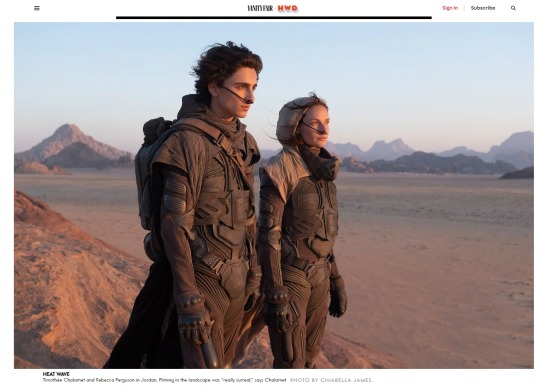
Behold Dune: An Exclusive Look at Timothée Chalamet, Zendaya, Oscar Isaac, and More
Timothée Chalamet remembers the darkness. It was the summer of 2019, and the cast and crew of Dune had ventured deep into the sandstone and granite canyons of southern Jordan, leaving in the middle of the night so they could catch the dawn on camera. The light spilling over the chasms gave the landscape an otherworldly feel. It was what they had come for.
“It was really surreal,” says Chalamet. “There are these Goliath landscapes, which you may imagine existing on planets in our universe, but not on Earth.”
They weren’t on Earth anymore, anyway. They were on a deadly, dust-dry battleground planet called Arrakis. In Frank Herbert’s epic 1965 sci-fi novel, Arrakis is the only known location of the galaxy’s most vital resource, the mind-altering, time-and-space-warping “spice.” In the new film adaptation, directed by Arrival and Blade Runner 2049 filmmaker Denis Villeneuve, Chalamet stars as the young royal Paul Atreides, the proverbial stranger in a very strange land, who’s fighting to protect this hostile new home even as it threatens to destroy him. Humans are the aliens on Arrakis. The dominant species on that world are immense, voracious sandworms that burrow through the barren drifts like subterranean dragons.
For the infinite seas of sand that give the story its title, the production moved to remote regions outside Abu Dhabi in the United Arab Emirates, where the temperatures rivaled the fiction in Herbert’s story. “I remember going out of my room at 2 a.m., and it being probably 100 degrees,” says Chalamet. During the shoot, he and the other actors were costumed in what the world of Dune calls “stillsuits”—thick, rubbery armor that preserves the body’s moisture, even gathering tiny bits from the breath exhaled through the nose. In the story, the suits are life-giving. In real life, they were agony. “The shooting temperature was sometimes 120 degrees,” says Chalamet. “They put a cap on it out there, if it gets too hot. I forget what the exact number is, but you can’t keep working.” The circumstances fed the story they were there to tell: “In a really grounded way, it was helpful to be in the stillsuits and to be at that level of exhaustion.”
It wouldn’t be Dune if it were easy. Herbert’s novel became a sci-fi touchstone in the 1960s, heralded for its world-building and ecological subtext, as well as its intricate (some say impenetrable) plot focusing on two families struggling for supremacy over Arrakis. The book created ripples that many see in everything from Star Wars to Alien to Game of Thrones. Still, for decades, the novel itself has defied adaptation. In the ’70s, the wild man experimental filmmaker Alejandro Jodorowsky mounted a quest to film it, but Hollywood considered the project too risky. David Lynch brought Dune to the big screen in a 1984 feature, but it was derided as an incomprehensible mess and a blight on his filmography. In 2000, a Dune miniseries on what’s now the SyFy channel became a hit for the cable network, but it is now only dimly remembered.
Villeneuve intends to create a Dune that has so far only existed in the imagination of readers. The key, he says, was to break the sprawling narrative in half. When Dune hits theaters on December 18, it will only be half the novel, with Warner Bros. agreeing to tell the story in two films, similar to the studio’s approach with Stephen King’s It and It Chapter Two. “I would not agree to make this adaptation of the book with one single movie,” says Villeneuve. “The world is too complex. It’s a world that takes its power in details.”
For Villeneuve, this 55-year-old story about a planet being mined to death was not merely a space adventure, but a prophecy. “No matter what you believe, Earth is changing, and we will have to adapt,” he says. “That’s why I think that Dune, this book, was written in the 20th century. It was a distant portrait of the reality of the oil and the capitalism and the exploitation—the overexploitation—of Earth. Today, things are just worse. It’s a coming-of-age story, but also a call for action for the youth.”
Chalamet’s character, Paul, thinks he’s just a boy struggling to find a place in the world, but he actually possesses the ability to change it. He has a supernatural gift to harness and unleash energy, lead others, and meld with the heart of his new home world. Think Greta Thunberg, only she’s a Jedi with a degree from Hogwarts. Paul comes from a powerful galactic family with a name that sounds like a constellation—the House Atreides. His father and mother, Duke Leto (played by Oscar Isaac) and Lady Jessica (Rebecca Ferguson), take their son from their lush, Scandinavian-like home world to preside over spice extraction on Arrakis. What follows is a clash with the criminal, politically connected House Harkonnen, led by the monstrous Baron Vladimir (Stellan Skarsgård), a mammoth with merciless appetites. The baron, created with full-body prosthetics, is like a rhino in human form. This version of the character is less of a madman and more of a predator. “As much as I deeply love the book, I felt that the baron was flirting very often with caricature,” says Villeneuve. “And I tried to bring him a bit more dimension. That’s why I brought in Stellan. Stellan has something in the eyes. You feel that there’s someone thinking, thinking, thinking—that has tension and is calculating inside, deep in the eyes. I can testify, it can be quite frightening.”
The director has also expanded the role of Paul’s mother, Lady Jessica. She’s a member of the Bene Gesserit, a sect of women who can read minds, control people with their voice (again, a precursor to the Jedi mind trick), and manipulate the balance of power in the universe. In the script, which Villeneuve wrote with Eric Roth and Jon Spaihts, she is even more fearsome than before. The studio’s plot synopsis describes her as a “warrior priestess.” As Villeneuve jokes, “It’s better than ‘space nun.’ ”
Lady Jessica’s duty is to deliver a savior to the universe—and now she has a greater role in defending and training Paul too. “She’s a mother, she’s a concubine, she’s a soldier,” says Ferguson. “Denis was very respectful of Frank’s work in the book, [but] the quality of the arcs for much of the women have been brought up to a new level. There were some shifts he did, and they are beautifully portrayed now.”
In an intriguing change to the source material, Villeneuve has also updated Dr. Liet Kynes, the leading ecologist on Arrakis and an independent power broker amid the various warring factions. Although always depicted as a white man, the character is now played by Sharon Duncan-Brewster (Rogue One), a black woman. “What Denis had stated to me was there was a lack of female characters in his cast, and he had always been very feminist, pro-women, and wanted to write the role for a woman,” Duncan-Brewster says. “This human being manages to basically keep the peace amongst many people. Women are very good at that, so why can’t Kynes be a woman? Why shouldn’t Kynes be a woman?”
As fans will know, there’s a vast menagerie of other characters populating Dune. There are humans called “mentats,” augmented with computerlike minds. Paul is mentored by two of them. There are also the bravado warriors Duncan Idaho and Gurney Halleck, played by Jason Momoa and Josh Brolin. Dave Bautista plays a sinister Harkonnen enforcer Glossu Rabban, and Charlotte Rampling has a key role as the Bene Gesserit reverend mother. The list goes on. In the seemingly unlivable wilds of Arrakis, Javier Bardem leads the Fremen tribe as Stilgar, and Zendaya costars as a mystery woman named Chani, who haunts Paul in his dreams as a vision with glowing blue eyes.
The breadth of Dune is what has made it so confounding for others to adapt. “It’s a book that tackles politics, religion, ecology, spirituality—and with a lot of characters,” says Villeneuve. “I think that’s why it’s so difficult. Honestly, it’s by far the most difficult thing I’ve done in my life.” After finishing this first movie, he’ll just have to do it all over again.
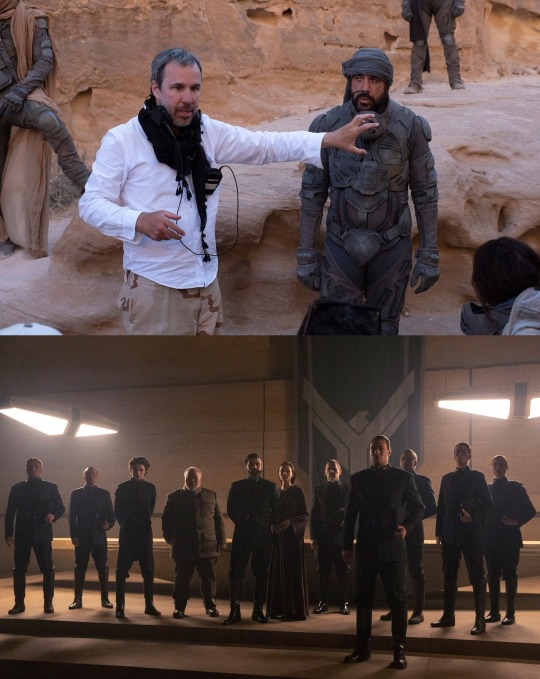
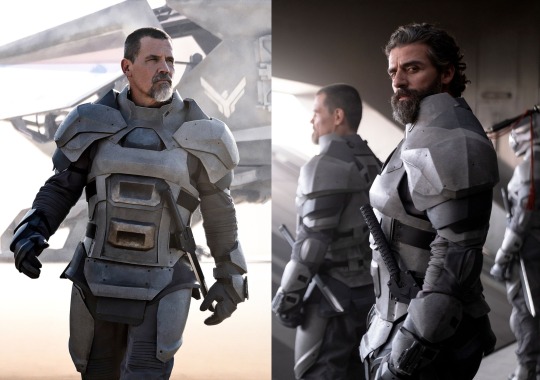

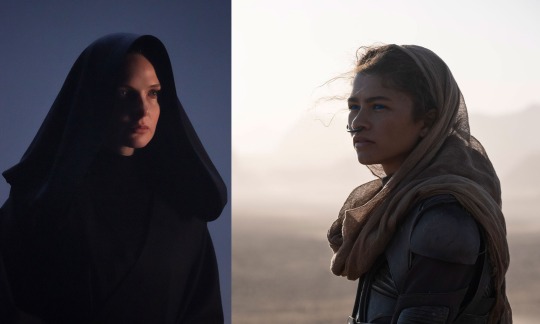
#timmy#timothee chalamet#dune 2020#paul atreides#denis villeneuve#zendaya#Rebecca Ferguson#Oscar Isaac#Josh Brolin#my edit
653 notes
·
View notes
Text
Western August I: Stagecoach (1939) - Recap and Review
Let’s start at the beginning...almost,

The Western arguably was born with the 1903 film, The Great Train Robbery. This 12-minute short film is a classic, and one of the earliest achievements in film-making. It’s also, unsurprisingly, a Western, and based on an actual train robbery. At the time it was made, the Wild West had only really ended a few years prior, with its heyday being about 40 years past. Which, yeah, is CRAZY. People who remembered the Wild West lived into the 1950s and ‘60s. It seems like so long ago, and it was, but it was still relatively recent from a historical standpoint.
From then, the Western remained a staple of cinema, and would be so for over half a century. And then, enter John Ford. Born in 1894, the Irish American director began his career in 1914 as an assistant and handyman, often working with his older brother Francis. Eventually, John took his place as a director, starting with silent films, especially westerns. Starting with the very successful film The Iron Horse in 1924, he quickly rose to stardom. He transitioned from silent films to talkies pretty effortlessly, and continued his streak. All the while, he was also one of the first directors to have a roster of actors in his company. You know how Tim Burton always uses Johnny Depp and Helena Bonham Carter? Or how the Coen Brothers always use Frances McDormand and John Goodman? Or Wes Andersen with Bill Murray and Owen Wilson? Yeah, that started with John Ford and...ugh...
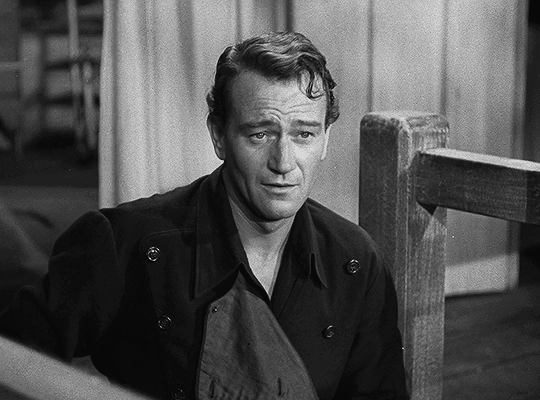
Before I start...fuck John Wayne.
Dude was a racist homophobic asshole, and absolutely a dick. Look it up, or don’t if you’d rather not have one of cinemas most iconic faces completely ruined for you. But OK, outside of that one time that he said that the Native Americans were “selfishly trying to keep the land for themselves”, or that he believed in white supremacy over uneducated blacks...yeah, he’s a DICK...
Marion Robert Morrison was born in Iowa in 1907, and began his film career after becoming injured while surfing without a surfboard and ending his football career. Yes, really. His football coach was a friend of a film director named John Ford, who hired Morrison as a favor to him. Said football coach was also friends with an actual remnant of the Old West: WYATT FUCKING EARP. YEAH.
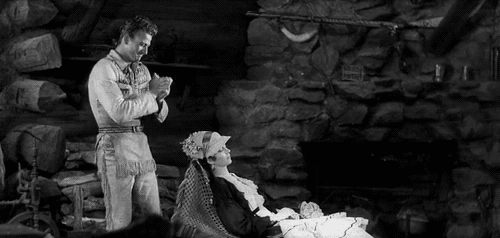
For years, Morrison was a bit player until starring in the film The Big Trail in 1930, a Western directed by Raoul Walsh. And he wasn’t exactly famous after this, but it was with this film that he took up a screen name: John Wayne, after a Revolutionary War general, Anthony Wayne, and...well, the name John. Anthony sounded too Italian. Yes, really. After this movie, Wayne continued to star in more Westerns, and even became one of the first film cowboys to sing on camera.
And then, 1939 came along, and John Ford came to him with a new film project. Being a classic Western, the film was about a group of settlers riding on a stagecoach together through the West. Strangers to each other, they find themselves attacked by a group of Native Americans belonging to the Apache tribes. This film, an adaptation of a 1939 short story, would come to be known as Stagecoach. And it would launch Ford, Wayne, and the Western genre into a Golden Age. So no more navel-gazing, let’s get started!
SPOILERS AHEAD!!!
Recap
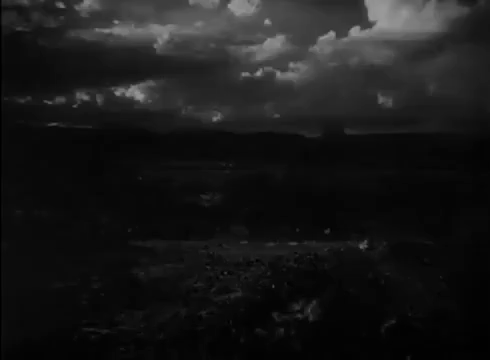
I get reminded that I haven’t watched a Criterion Collection film in a while, and the film begins with a rousing Western theme, courtesy of...holy shit, this movie has SEVEN COMPOSERS? Well, OK, courtesy of somebody in that list of seven. From there, we cut to a camp somewhere in the Arizona Territory in 1880. Which, again, is only 60 years prior to this film’s release date. There, a group of men discuss the danger imposed on them by the Apache, stirred up by the legendary warrior Geronimo.
And from there, we go to the town of Tonto, where stagecoach driver Buck (Andy Devine) lets a group of passengers out. One of these passengers is Lucy Mallory (Louise Platt), there to catch another shuttle to meet her husband in Dry Fork, New Mexico. However, the stagecoach gains an extra passenger in the form of the Marshal, Curley Wilcox (George Bancroft), who goes to find an outlaw also in Lordsburg.
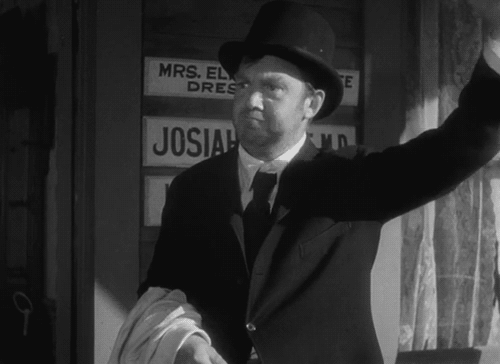
The passenger list builds with the addition of Doc Boone (Thomas Mitchell) and Dallas (Claire Trevor), a drunk and a prostitute both driven out of town by the Law and Order League of Women, due to social stigma affecting them both. In a bar getting a farewell drink, Doc meets yet one more passenger, Samuel Peacock (Donald Meek), a whiskey salesman that Doc is glad to meet. Meanwhile, banker Henry Gatewood (Berton Churchill) also boards the vehicle, under mysterious circumstances.
Friends of Lucy are worried with her travelling a drunk and a prostitute (the ABSOLUTE SCANDAL), but she needs to visit her husband in Dry Fork. As she leaves, she meets eyes with the dangerous but enigmatic gambler Hatfield (John Carradine). And before they’re able to leave altogether, the carriage is stopped by the army, who warn them of the Apache and Geronimo. All of the passengers refuse to get off, and YET TWO MORE passengers board to protect the carriage: the Marshal and Hatfield. And finally, they’re off! But as they head out, they’re stopped when they encounter a recently escaped outlaw.
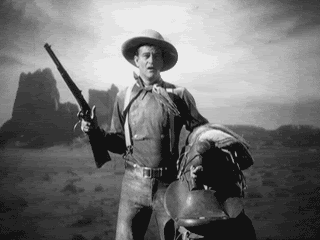
This is The Ringo Kid (John Wayne), who just got out of prison. The Marshal sees him, and takes him into custody on the way to Lordsburg, where they plan to drop him off into jail. And yes, he’s put on the fucking stagecoach. In total, we have Buck, the Marshal, Lucy, Hatfield, Doc, Peacock, Gatewood, and the Ringo Kid. Jesus, that’s a crowded-ass carriage, even if two of them are outside of it. Hell, Ringo’s sitting on the fuckin’ floor!
Anyway, the group interacts and introduces themselves. We learn that Doc once patched up Ringo’s brother, and was discharged from the Union Army for drunkenness. We learn that Hatfield is a true southern gentleman, and a veteran of the Confederate army (much to Doc’s ire), and that Ringo’s brother was murdered under mysterious circumstances.
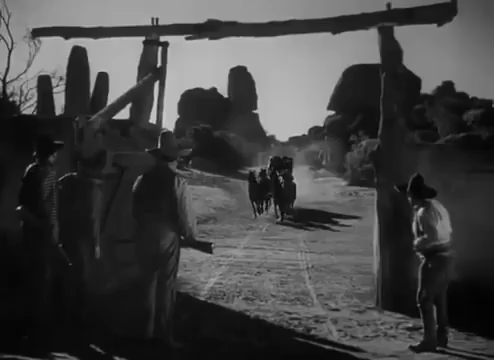
The group gets to Dry Forks, currently under occupation by the army. Said army had accompanied them (outside of the carriage, thank God) to Dry Forks, and are staying there to guard against the Apache. Meanwhile, Lucy’s dismayed to find that her husband isn’t in fact there. This leads to the debate of whether or not the party should go back to Tonto, or head onwards to Lordsburg. Buck wants to go back to Tonto, as does Peacock, while literally everybody else wants to go to Lordsburg. And so, they continue onwards.
Before heading onwards, the group sits for dinner, during which Ringo is the only one to show any form of kindness to Dallas, as everybody else looks down on her for prostitution. Shit, man, they won’t even sit near her at the table. Jesus. Unfortunately, Dallas is used to this cruel treatment, and it allows her to bond with Ringo in her loneliness. Once again, character interactions reveal things about our cast. Lucy is feeling quite ill, and Hatfield reveals that he served under her father in the Confederate Army.

And from there, the coach continues on through the desert. Buck and the Marshal argue about letting Ringo free, as he aims to continue his feud with the outlaw Luke Plummer and his brothers, despite the fact that he’ll likely be killed by them. It’s for this reason that the Marshal wants to keep Ringo in his custody, as he was good friends with his father and doesn’t want to see him killed by the dangerous Plummers, whom Buck thinks should be taken down regardless.
Inside the coach, the banker reveals that he’s literally a Republican from 2016 (he rants about small government, and claims that a businessman should be President, holy shit), while people keep treating Dallas like shit, except for Ringo. They go through a cold mountain pass, which isn’t great for Lucy for some reason. It’s actually quite rough on everyone. Except for Doc Boone, who keeps drinking Peacock’s whiskey samples, which is hilarious.
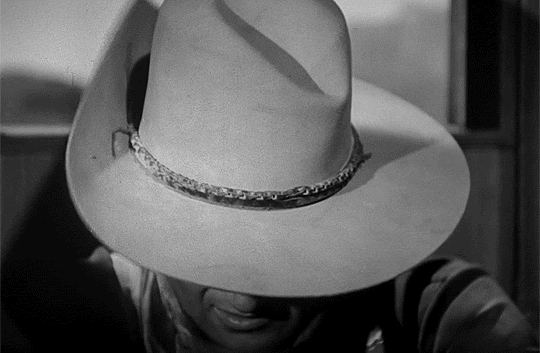
Finally, the group makes it to the next stop, Apache Wells. There, Lucy discovers that her husband has been severely wounded in a battle with the Apache, and she falls faint. Despite being absolutely SMASHED, Doc sobers up to help her, with the help of Ringo and the Marshal. Meanwhile, Dallas watches over her, despite the rancor that Lucy’s tossed at her this whole time.
The group stays the night, attended to by Chris (Chris Pin-Martin) a Mexican man who’s married to Yakima (Elvira Rios), an Apache woman who...is played by a Mexican singer. Huh. I mean...it’s still technically redface, unfortunately. But then again, the attitude towards Native American actors at this time was...oh boy. And the portrayal of the Mexicans in the camp aren’t exactly great, as a group of them steal the group’s spare horses, meaning that they only have one set of horses to use from here on out.
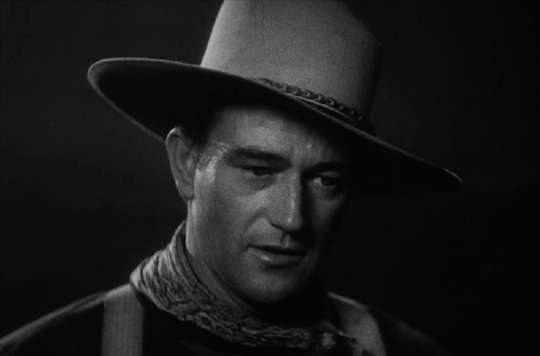
But amongst the unpleasant is a pleasant surprise, and the reveal of the cause for Lucy’s mysterious condition: she’s pregnant. Or rather, she was, as the baby’s just been delivered, and is being held by Dallas. As the group celebrates, Chris warns Ringo to stay away from Lordsburg, as the Plummers will kill him. But Ringo has something else on his mind.
See, on seeing Dallas with the baby, he finds himself quite in love with her. He finds her outside, and tells her that his father and brothers were killed by the Plummers. In turn, she reveals that her family was massacred on the real-life Superstition Mountain. Their conversation ends in Ringo proposing to Dallas, which she protests to because of her mysterious past.
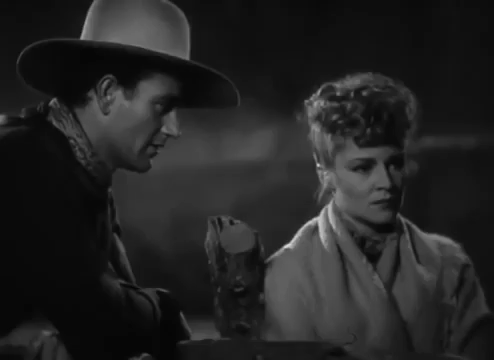
The next morning, Yakima’s left with Chris’ horse and rifle, and the group worry that she’s gone to tell the Apache. After Gatewood panics about his mysterious valise being possibly stolen, the group packs up and readies themselves to go. But Lucy is, of course, still ill from literally giving birth hours ago. Things are still tense between Lucy and Dallas, despite Dallas taking care of her the entire fucking night. Jesus, lady, that high horse is looking uncomfortable, you should get off it.
Dallas has something else to worry about, as she’s thinking on Ringo’s proposal. She consults with the doctor, who reminds her of her mysterious and checkered past being revealed if she goes. But she doesn’t seem to care, and she decides to accept the proposal. As for the rest, Gatewood’s freakin’ the fuck out. Because of Lucy’s condition, the doctor requests that they don’t leave until a day later. And Gatewood doesn’t give a single shit, as the Apache are close enough. Still, the party decides to stay, at Hatfield’s added insistence.
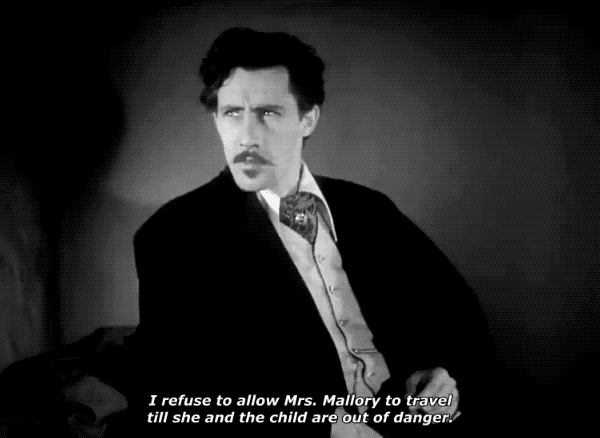
Ringo and Dallas talk, with Dallas both warning him of the Plummers, and also accepting his proposal. The men are all still arguing about whether or not they should leave, and they note that the Apache are likely between them and their destination. Ringo then takes the opportunity to escape and ride to Lordsburg for revenge on the Plummers. But he stops when he sees smoke signals on the hill. The Apache are coming.
No more waiting, it’s time to GO. Taking the still recovering lady and her newborn child Coyote into the stagecoach, they take off into the desert. Gatewood continues to run his loudmouth, to the ire of Hatfield and Ringo. And Peacock, to my delight, shows some kindness and “Christian charity” to Dallas, as she holds Coyote during the ride. And after all, they’re almost at the ferry!
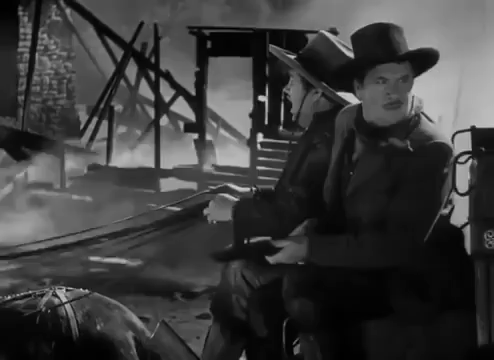
Ah, shit, the ferry! Looks like the ferry, and the entire town of Lee’s Ferry have been burned. And if they ford the river, all of their supplies could be flooded, or the oxen could drown! Or worse, dysentery could set in! That’s what The Oregon Trail taught me! And yet, despite this, that’s actually EXACTLY what they do! And unlike me literally every time I’ve every tried to cross a river without a ferry, they make it through fine! Realistic educational games my ASS!
But it’s not entirely safe, as the group are being watched by none other than the Apache, who make their way down to intercept the group. In the carriage, meanwhile, the group is thankful that they’ve made their way from danger, and even Gatewood relaxes a little. Doc Boone makes a toast, and everyone seems to be getting along for once.
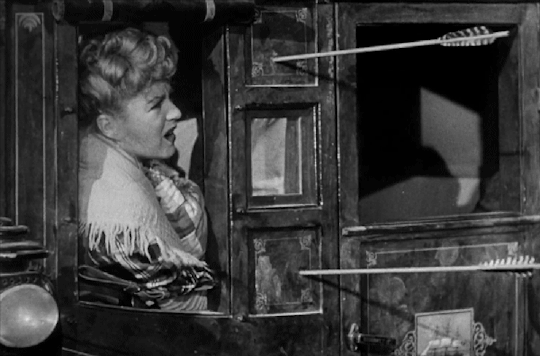
OH FUCK, PEACOCK GOT HIT!
The girlfriend IMMEDIATELY SAYS, “Now he really is Drew Peacock.” I leave and get boba to soothe my injured spirit from that well-timed joke. And then, the movie continues, and the chase is on! The Apache chase the stagecoach through the desert, and the groups trade gunshots and arrows, with Ringo shooting from the back. Gatewood panics so hard that Doc Boone punches him and IMMEDIATELY knocks him out, as he attends to Peacock’s injuries.
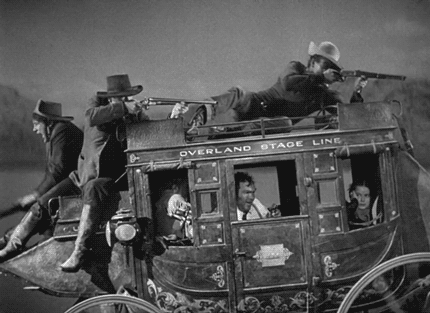
But despite their best efforts, the Apache group catches up to them, although many of them are killed by Ringo, the Marshal, Doc, and Hatfield. In the process, Buck is also shot, and Ringo literally jumps ON THE FUCKING HORSES, and commands them from the front like a goddamn badass. Things begin to get worse, as everybody in the stagecoach runs out of ammo, at the worst possible time. Hatfield only has one bullet remaining, and he considers using it...to kill Lucy! Holy fuck!
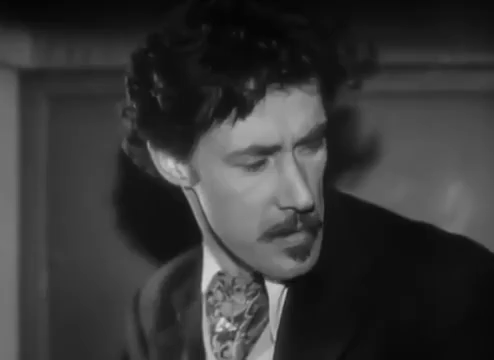
And just as he’s about to fire IN HER FUCKING FACE, the sounds of horns ring out as the cavalry arrives. And Hatfield, dick that he is, is shot. I think he was trying to spare her the indignity of being captured by the Apache, but Jesus, man! He collapses, and reveals that his father is a judge in Virginia before he...either passes out or dies, I’m not sure. The group finally gets to Lordsburg, where it turns out that Lucy’s husband is gonna be OK, and wasn’t severely injured. She tanks Dallas for everything that she’s done, and promises to help her should she ever need assistance. Good, finally, the lady needs a goddamn break.
The stagecoach rides through the busy town, and the arrival of the Ringo Kid gets the attention of Luke Plummer (Tom Tyler), who fetches his brothers Hank (Vester Pegg) and Ike (Joe Rickson). Time to get ready for a showdown, it seems. Dallas seems to know this, and goes to Ringo after the living Peacock (yay!) and the not-so-living Hatfield (oof) are brought in for medical help.

Buck’s also OK, but Gatewood isn’t. See, that valise he was carrying was actually full of money, and he had embezzled it from his own bank. He had counted on telegraph lines being down, so that he could escape with his ill-gotten gains, but has no such luck, and is led away in handcuffs! HA!
Ringo, meanwhile, is set to kill Luke Plummer and his brothers. The Marshal lets him escape, and promises to get Dallas safely down to a little ranch he owns in the South. Dallas and Ringo walk off together, and Dallas tries to get him to leave and say goodbye before he goes to his death, and before he finds out about her past (presumably as a prostitute).
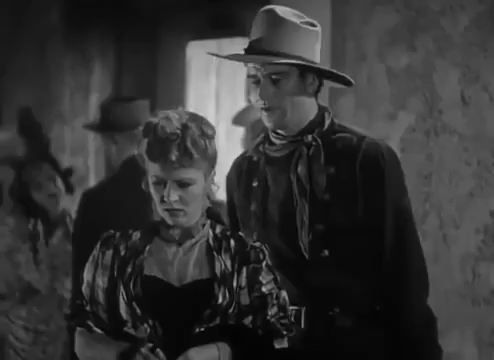
See, they’re actually walking up to a brothel, where Dallas is going to stay and work. Because, yeah, she’s a prostitute. Sucks that she’s been so maligned, because prostitution fuckin’ BUILT the Old West! I guess it’s easier to see that with historical context. As Ringo finds out the truth about Dallas (which he might’ve known all along), he still insists upon marrying her...and upon killing the Plummers.

Doc, meanwhile, goes to the bar where the Plummers are waiting. He tells them that he’ll get them arrested, and Luke swears to come back for him after their business with Ringo is concluded. The brothers head outside, ready for the final showdown. It’s 3 on one, Plummers against Ringo. Ringo fires! A few more shots...then silence. And Dallas mourns.
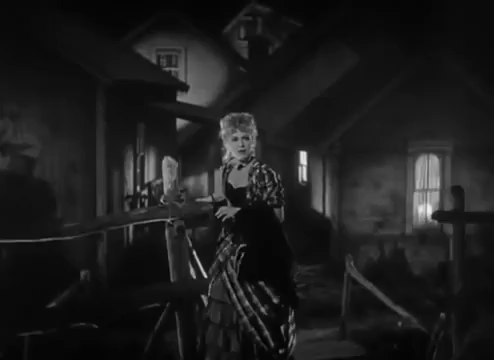
Except that Ringo wins the fight, and goes back to her! A happy ending! I’m sure that’ll be pretty goddamn rare this month. The Marshal arrives to take Ringo away, and Ringo goes as promised. She asks to ride with him a bit, and the Marshal agrees. He and Doc watch them get on, then cause the horses of the carriage to stampede away, letting Ringo and Dallas escape into the desert, together. And that’s the end!

Y’know...I liked it! I really liked it!
This movie is often referred to as the greatest Western of all time, and the reason that the Western survived into the next several decades. And honestly, I get it! It was nominated for 7 Academy Awards, and won for Best Supporting Actor (Thomas Mitchell, AKA Doc) and Best Original Score, both of which were quite deserved!
Review time!
Cast and Acting - 9/10: Sure, it’s a little hokey. But at the same time, it’s good classic Hollywood acting! Wayne, Trevor, Mitchell, Carradine, and Devine are standouts for me, all of which serving their roles well. Also, fun fact about Andy Devine: he’s the voice of Friar Tuck in Disney’s Robin Hood! KNEW I recognized that voice!
Plot and Writing - 10/10: Standard plot? Sure. Engaging as hell? Hell yeah! This is just a good story, plain and simple. No holes, no problems, no mistakes, and purely straightforward. Great writing by the original story author, Ernest Haycox, and great screenplay by Dudley Nichols!
Directing and Cinematography - 10/10: Great looking movie, too! All credit to John Ford, unsurprisingly. Cinematographer Bert Glennon also deserves credit for the beautiful landscape shots throughout. Gogeous film, even in black-and-white!
Production and Art Design - 8/10: This is pretty standard Western production design, so not a lot to write home about specifically. However, that doesn’t mean it’s bad. To the contrary, it’s quite good! Just does stand out to me quite as much as other movies. Might be a nitpick, but it’s still something against the film.
Music and Editing - 10/10: No complaints! Seven composers definitely make their presence known, and you can tell that this score heavily informed all Western scores after it. It’s iconic, and it’s perfect for the mood. As for the editing by Otho Lovering and Dorothy Spencer...it’s great! Perfect pacing, well-edited...no complaints whatsoever.

94%, and I had fun with this one!
I honestly did have quite a good time with this one. I can’t really call it a “fun” movie, but it definitely is a good one. Plus, it’s a John Ford/John Wayne film, which is basically a staple of the genre. So, what’s next?
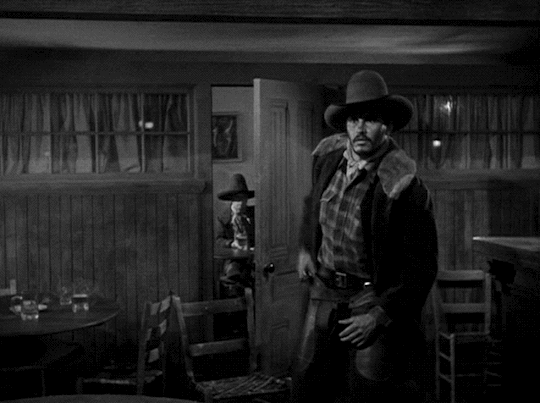
Next: My Darling Clementine (1946), dir. John Ford
#stagecoach#stagecoach 1939#john ford#claire trevor#john wayne#andy devine#john carradine#thomas mitchell#george bancroft#apache#western august#365 days 365 movies#365 movie challenge#western genre#user365#usersasha#my gifs#mygifs
9 notes
·
View notes
Text
heyo!! I was tagged by @penceysprep thanks bestie <3
rules: 5 things you think your followers should know about you ~ post under the cut bc I talk a lot ~
I’m a lesbian <3 women make my brain go dummy stubid. like oh my god babe you didn’t bring a coat??? please take my denim jacket I don’t want you to freeze. yes it has my chem patches on it wait where are you going-
I am certified biliterate in ancient Latin >:) if you write fic with little incantations / spells in them with google translate just know that I love you & your effort & commitment and also whatever you wrote is so so wrong <3
I am afflicted with jersey pride disorder :( frank iero makes a post abt new jersey I say so true bestie who DOESN’T love driving 65 mph directly over potholes to get a porkroll egg and cheese with saltpeppaketchup at the bagel shop but not THAT one the good one on the other side of town but take backroads bc the traffic on the circle is hell this time of day also do you wanna go down the shore this weekend????
my apologies to those geeks the way brothers but I believe in star trek sci-fi supremacy. I don’t care about your Star Wars space battle. I want my aliens to have the worst possible practical effects. I want a dog with a unicorn horn stuck on it’s head, I want a fried egg that kills people, I want an entire episode dedicated to the breeding habits of those furry backpack keychains. who cares about killing nameless faceless clones or whatever my phaser is set to stun. I am here to seek out new life forms and new civilizations for the purpose of scientific exploration and furthering the goal of peace in the federation under the laws of the prime directive. I hear the word t’hy’la my brain floods with serotonin. if necessary we can compromise by marathoning all the LotR movies <3
I do a lot of fiber crafting!! if it involves fabric or fiber I’ve probably at least dabbled in it. spinning yarn, crochet, needle and loom knitting, needle felting, garment sewing, sewing stuffed animals, bra and corset making, needlepoint and cross stitch embroidery, latch hooking, darning and patching, reupholstery, weaving, etc etc it is all fun <3 my current project is a secret. just know that You Wouldn’t Download A Scarf
I’m tagging my beloved @dangersday and @tearsofblood and @mxchinescrew <3
11 notes
·
View notes
Note
I've been reading this article called "In Plain Sight: How White Supremacy, Misogyny, and Hate Targeted the Star Wars Sequel Trilogy and Won", and I think you'd like it, too.
Well, that was a very long article that I didn't read all of and that I only half agree with. I do agree that there are a large number of right-wing fans who hate think somehow the sequels are ~too progressive~ but I'm on the complete opposite side and think the sequels are the most misogynistic and racist Star Wars has ever been, including 70s Lucas who thought there was only one black man and three (white) women in the entire galaxy.
I think TFA completely failed to be original but was at least fun in that Rey and Finn were both immediately engaging characters I could become attached to and root for, even if it was a movie I could never truly like for the abominable way it treated Han and Luke and Leia. It's hard to say if I hate TLJ or TROS more, but TLJ was definitely the movie that ruined the entire trajectory of the trilogy. Abrams' problem in TFA was, as usual, that he sets up mysteries and then gets so enamored of his own mysteries that he refuses to answer the fucking questions he set up. Who are Rey's parents? We don't know! And he's not going to tell us! As that thing that came out a while ago said, even HE doesn't know the answers to plotlines he set up! So while I truly believe TFA deliberately set up Rey as Luke's daughter and will never, ever understand how anyone could walk out of that movie thinking differently (the whole movie is just a retread of the OT but Rey is literally just Luke and Anakin. A lone force sensitive kid on a desert planet who gets pulled into a galaxy wide conflict, who calls her relatives' lightsaber to her, who dreams of the island Luke is on when she's never seen the ocean), he refused to actually commit to that plot point.
That left room for Johnson to come in and say everything we've ever known about Star Wars was wrong and completely pull the rug out from under us because shock is more important than narrative or foreshadowing or an actually satisfying conclusion. He took a trilogy, the first NOT about a white dude, and instead of deepening Rey and Finn's arcs or paying respect to their characters at all, he completely undermined not just the first movie but the entire trilogy to center it around the evil white dude nazi. Rey loses her entire personality and motivation and becomes entirely focused on saving Kyle Ron, a man who she has literally JUST watched murder the only father figure she's ever known and then put her first friend into a coma, this directly after he kidnapped and assaulted her, who she knows is also responsible for the deaths of literal billions and directly torturing rebellion members. Why in the everloving fuck does she want to save him? Why is that her responsibility? It's NOT a woman's job to save a man from himself and it's so fucking disgusting that that's the narrative they gave us in 2017.
If the end of TFA had been Luke meeting Rey and realizing he'd been reunited with the daughter he thought dead, at least she would have a REASON for making it her mission to save this piece of shit. But it doesn't! They threw out everything that made Rey who she was to center the movie around the white dude! Finn's plot was basically just a retread of TFA! They took him from the male lead to a b plot, gave him no scenes with Rey when their relationship (and eventual romance) was such a huge part of TFA. And then TROS comes in and validates the vile nazi romance, again gives Finn no real plot, doesn't significantly give us a relationship between Finn and Rey and Poe, the supposed three main characters, and somehow tries to redeem Kyle Ron in a move that makes no fucking sense? All while completely fucking over Luke and Leia over the course of three movies, never giving them any real motivation or plots, and killing them both in ignomious ways??? So yeah. I think the people who hate these films fall into two categories, but definitely it's not just the rightwingers who think Disney can't tell a story.
18 notes
·
View notes
Link
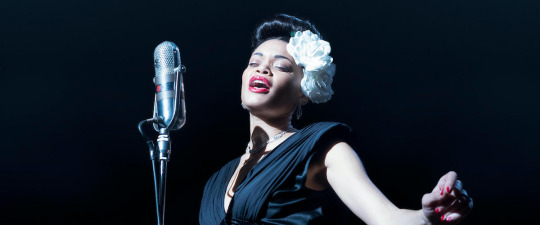
"The United States vs. Billie Holiday" is so misguided that it's hard to know where to start griping about it. It wallows in cruelty, misery, and degradation without providing insight into the historical personages who are so thoughtfully depicted by its cast. In the title role, singer Andra Day inhabits Holiday with such intensity that she partially redeems the movie. But there's a major caveat: you'll likely spend the whole running time wishing Day had been given a vehicle with more to say about Holiday than this one, the gist of which can be summed up as, "That poor junkie sure could sing."
Directed by Lee Daniels and written by Suzan Lori-Parks, "The United States vs. Billie Holiday" is a film about a brilliant artist and drug addict that seems less interested in the art than in the pornographically exact details of the addiction (and the self-damage that often comes with it, such as alcoholism, self-destructive/abusive relationships, and sexually compulsive behavior). If you called the movie up on Hulu, its debut streaming platform, hoping to watch facsimiles of Holiday and her bandmates, lovers, and hangers-on tying off and shooting up, often with closeups of needles going into arms (and in one case, blood spurting from an injection hole), you won't be disappointed. This is also your movie if you want to watch men beating each other up over women, men beating women up over men, Black people selling out and exploiting other Black people for clout or money, and an array of cardboard cutout white authority figures tormenting the Black characters.
The poker-faced Caucasoid sadists in the film (led by Garrett Hedlund's Harry J. Anslinger, the first chief of the U.S. Treasury Department's Bureau of Narcotics, an outspoken racist who believed jazz was jungle music and a corrupting influence on whites) don't so much incarnate the ugliness of white supremacy in mid-20th century America as give viewers heels that they can boo. Anslinger even makes a point of showing up in person at key points in the narrative of torment that he has authored for Holiday, as punishment for daring to continue singing her anti-lynching ballad "Strange Fruit" after being warned not to. Holiday lost her cabaret license in a drug bust, and was targeted again in a subsequent bust that biographers agree was based on planted narcotics.
This film's version of Anslinger might as well be Elmer Fudd chasing a wascally wabbit. The cartoonish depiction of Anslinger (drawn from the film's source material, Johann Hari's Chasing the Scream: The First and Last Days of the War on Drugs) is reminiscent of the otherwise excellent historical drama "The Hurricane," which made it seem as if Rubin "Hurricane" Carter, a champion boxer railroaded on a phony murder charge, was victimized not by appendages of an American government that had been around for centuries, but by a lone, bad white cop who hated him for being Black.
This is, of course, a familiar and regrettable tendency in Hollywood biopics dealing with race and inequity—a dramatic shortcut. It's easy to make viewers despise the sort of melodramatic movie villain who would twirl a mustache if he had one, and hard to make them care about systemic and institutionalized racism, or the unequal enforcement of drug laws that disproportionately hurt entertainers of color, and still do. (The drug habits of white stars like Judy Garland were treated more sympathetically by law enforcement.)
Even more unfortunate is the decision to divide screen time between Holiday and a Black junior FBI agent named Jimmy Fletcher (Trevante Rhodes), who is based on a real man who regretted his role in Holiday's persecution but didn't have the kind of longstanding love affair with Holiday depicted in this movie. A condensed excerpt from Hari's book says Fletcher set up one of Holiday's busts (though apparently not one that sent her to prison, as depicted in Daniels' movie). He was seen dancing with her at a club a while later, and many years after that was sent a signed copy of Holiday's autobiography with a note from the singer that read, in part, "Most federal agents are nice people. They’ve got a dirty job to do and they have to do it. Some of the nicer ones have feelings enough to hate themselves sometime for what they have to do." But Daniels and Parks go several extra miles beyond that, showing Fletcher not just falling in love with the singer but tanking testimony to make amends for that early bust, then becoming a constant, nurturing presence in her life, up to and including her dying days in a hospital following her final overdose (along the way, Fletcher also becomes a junkie, like nearly everyone else in Holiday's orbit).
What's questionable here isn't the lack of veracity (if infidelity to history were a deal-breaker for audiences, Shakespeare wouldn't have lasted five minutes) but the message it conveys. What we come away with here is the story of a race traitor who expresses his guilt about setting up one of the century's greatest singers by entering into a redemptive affair with her, and becoming so adored and trusted that he learns her bleakest secrets. Two of these—witnessing acts of racist violence and getting turned out by her own mother in the brothel where she was raised—are dramatized in a tour-de-force, single-take, Grand Guignol tracking shot that turns Holiday's trauma into a theme park ride. It's as if the Haunted Mansion at Disney World had been replaced with a tour of Richard Pryor's childhood.
And what, the reader may rightly ask, does any of this have to do with "Strange Fruit"? It's hard to say. The film is so poorly structured and ineptly edited that I often wasn't sure what I was looking at, when it was taking place, or what the filmmakers wanted me to take away, other than that Holiday had a wretched early life; that her adulthood was an equally miserable slog, filled with self-medicating that made things worse; and that despite it all, she was a crackerjack song interpreter who left some classic recordings behind. Natasha Lyonne shows up as Tallulah Bankhead, Holiday's maybe-lover, and disappears instantly. Years bleed into other years. Much dope is shot.
Holiday's indefatigable spirit gets buried under misery porn that's a bit much even by Daniels' standards. At least "Precious" was audacious. You could tell Daniels was going for a semi-satirical, Todd Solondz-like vibe, where you were supposed to ask, "Is this meant to be funny, and am I a bad person for laughing?" There's no such tonal cheekiness here. The film is solemn as can be, hammering nails into Billie Holiday's ankles and wrists and raising her up on the cross at the end. Daniels frames Holiday in a tight closeup and watches her sing as she stares into the middle distance through glazed eyes. He crosscuts between Holiday singing onstage and getting shtupped backstage by a smooth criminal. He stares at her defeated, puffy face as she lies in a hospital bed with a catheter snaking from her hospital gown, talking to her pals about how her liver has failed. There seems to be no dramatic objective to scenes like these other than to remind us yet again, "Billie Holiday was a junkie, drugs are bad."
Over the course of two hours that feel like three, "All of Me" loops in and out of the soundtrack in varied arrangements, including a rumbling funereal version that may very well show up in a trailer advertising an R-rated, dark-and-gritty reboot of, hell, who knows which early 20th century cartoon property. Maybe Betty Boop. The film itself seems strung out, and not in an interesting way. It needed an intervention.
#addiction#andra day#billie holiday#biopic#black men#black people#black women#drugs#film#heroin#jazz#lee daniels#lynching#music#racism#roger ebert#strange fruit#trevante rhodes#usa
17 notes
·
View notes
Text
About this Blog
I've gotten a lot of new followers recently so let me make some things clear:
I'm a Black nonbinary lesbian. This and other things has informed my politics
I'm a feminist who centers Black transgender women in my politics
In general, I center Black women in my political framework.
I support Black Lives Matter.
I believe in police abolition (recent events as well as the origins of police in America as well as the fact that cops literally tried to put down the Civil Rights movement have informed this stance)
I believe in prison abolition (read "Are Prisons Obsolete" by Angela Y Davis)
(Yes, I understand that the above two points will take years to fully implement)
I'm Pro-Palestine.
I am anti-racist. No, white people cannot and do not experience racism. Life is not a two-way street.
The ruling in the Depp v Heard case not only makes no sense, but it's opened the flood gates to abusers continuing to harass and harm their victims through abuse litigation and DV/IPV victims no longer feeling safe enough to speak.
America is a white supremacist colonial and imperial state that continues to commit genocide against the Native Americans here, as well as continuing to destabilize and destroy both the environment and marginalized people in the Global South.
Both white supremacy and antiBlackness are global.
I'm anti-capitalist.
I'm pro choice.
Yes, I support (and love) Moses Ingram, as well as John Boyega and Ahmed Best and KMT and every other actor of color who has faced racist backlash from this abysmally backwards fandom.
Stop blaming China for Disney's racism.
I support gay rights. We deserve liberation from the cisheteropatriarchy that I and others like me are suffering under and have been suffering under for centuries.
I fully support my Muslim and Jewish followers (as well as those who don't follow me lol). The real world and Star Wars are steeped in antisemitism and islamophobia.
If I remember anything else, I'll add it in a reblog. My being a minority and a creative and someone who pays attention to the patterns in structures of oppression in America/Western Society means that I'm aware of and fully believe that yes, fiction does impact reality--it makes no sense to say otherwise. I'm critical of everything I watch. Star Wars is expansive and creative and deeply bigoted--as is a lot of other media. It's not enough to just be aware of it, one has to talk about it as well, which I do when I can on this blog.
I made this post partly because I noticed an imbalance between my Twitter presence and here, that imbalance being that I was retweeting news and current events while being totally silent here. I'm laying this all out in order to correct that.
#ch posts#psa#noting much to add in the tags#I tried to be more general bc I know that#there's a lot of overlaps and other categories that I'm missing
57 notes
·
View notes
Note
(1/3) The whole "reylo is the only feminist star wars ship" thing reminds me a lot of the "actually stucky is feminist and steggy is a straight man's ship" posts that the stucky shippers were pushing post endgame. I know there's a lot of racism tied up with the reylos and finn and john that didn't exist between the stucky shippers and peggy and hayley (although there was some internalized misogyny for sure), and that stucky shippers did have homophobia to contend with (although it's hardly true
(2/3) that every queer mcu fan shipped stucky), so I don’t want to make a false equivalence, but the “this ship between two men/white people is the only feminist option and we’re the real defenders of this woman/black character that we’ve spent years ignoring, and the queer women/people of color who claim to be their fans are the real misogynists and homophobes/racists” is really familiar. It’s clear that co-opting feminism to make their preferred ship into the Only Right Option when people
(3/3) don’t get the ending they wanted is becoming a Thing that needs to stop, but I’m not really sure how to address it. Those fandoms also have the “if everything isn’t about this white male side character all time, it’s bad writing” problem in common, and that feels related as well.
Ok so this is a very complicated topic and I’ll preface itby saying two things first I’m not actually familiar with the argument that “Reylois the only feminist star wars ship” because thankfully my dash is filled withsensible people that don’t inundate me with faux feminist opinions that try torebrand an abusive ship into a feminist ship. Second racism actually plays a partin the stucky shippers too and I’ll demonstrate why in a bit.
For those of you reading this I will pretend this is the first time you’ve ever encountered the assertion that Reylo is abusive statement. I’ll try to do this quickly but here goes. Kylo starts off by literally torturing her and telling her he can take whatever he wants. Invading not only her mind but initially hedoesn’t know she has the force. So its not a battle of equals we saw how easilyhe took what he wanted from Poe Dameron. She does eventually get into his head but this is just the first encounter. Then snoke bridges their minds together Kylo is constantly entering Rey’s mind telling her she’s nothing she comes from nothing he needs him to realize her full potential. Mind you Kylo had years ofjedi training he probably knows someone bridged their minds together onpurpose. Rey is horrified this is the man who killed a good man his own fatherin cold blood and put her new friend in a coma. But Kylo keeps at her tellingher its inevitable that they’ll be together. (Some extra bits of fandom herethe Reylos are not shy with their fanon that Kylo/Ben was neglected as a childby his parents, which is completely a fabrication. They also say he’s beenbrainwashed which while confirmed by TROS that Palpatine was impersonating his Grandfather Darth Vader/Anakin this does not answer the why of the matter that if Finn, who was stolen from his parents, could fight the brainwashing why not Kylo? Another bit of contention I absolutely hated how they wrote Luke in TLJ and while I accepted it doesn’t explain why Kylo killed all the padawanlearners that didn’t join him.) TL:DR of this section: going back to Kylo’s abusive behavior, calling Rey nothing, invading her mind, insisting that she leave her new friends that care for her and support her to be with him is classic abusive behavior. Don’t believe me check out Lundy Buncroft.
Moving on how is stucky vs steggy racist? Its quite simple really, in the fact that if anyone was written to be romantic interest for steve besides Peggy it was Samnot Tony, Natasha or Bucky. There’s a great meta post I’m not sure is on thisblog but it should be on mcufhpoc if you care to dig about how Sam was writtenas a love interest framed by the story in the winter soldier to perfectly setSteve up to be bisexual. Now I have nothing against Bucky but Steve spent most of his time violently at odds with Bucky in the winter soldier and civil war. Not exactly what you would want from a ship. Why do you think so much Stucky fanfic is about preserum Steve/Bucky? Gross implications about ableism aside it was for years the only way you could justify the ship. The only other optionin canon was Sharon but frankly the writers of the mcu seemed to hate herreducing her role substantially from what was originally planned. There was allsorts of cries incest (when literally this is the same fandom that ships Thorkiabout two brothers who were raised as brothers except one of them happens to beadopted. Like they can’t even get the definition of incest right Steve was dating Peggy not Peggy and Sharon.) Also he didn’t know they were related until years after he met Sharon. I’m only including this Sharon bit because it demonstrates so nicely the kind of internalized misogyny in display in this fandom. According to Stucky fans no woman is worthyof Steve only the white dude he grew up with and fought several times and btw they make the most sense when Steve is being cared for preserum/sarcasm. Which brings me to the other big Steve ship Stony. That’s a huge ship and they can barely stand each other in canon.

TL;DR of this section its obvious from the numbers that Stucky and Stony are the only ships that matter the fandom only really wants is white dudeslash.
Btw its not actually feminist for so many straight women to ship dudes. Gay men have been begging for straight women to listen to them about this for years.
Last implicit question: What phenomenon is actually at work here if it doesn’t fit feminism because Reylo is abusive and Stucky just shows off the tip of the iceberg of internalized misogyny?
Answer: Its white supremacy.
Which goes back to your statement of “Those fandoms also have the "if everything isn't about this white male side character all time, it's bad writing" problem in common, and that feels related as well.”
These fandoms and all fandoms really can only fathom fandom as yet another way of obsessing over white men.
mod m
65 notes
·
View notes
Text
Azula’s Playlist
Okay, so. I made a playlist for Azula like a lot of other people because we all do appreciate playlists made for our favorite characters. But for some reason (I’m obsessed with here) I decided to make a commentary of why I did chose these songs and this specific order. In other words, I’m writing another essay about Azula.. It’s a playlist on her during the series but also how I imagined her redemption arc.
So. Here’s the link to the playlist if y’all are interested: https://open.spotify.com/playlist/6O0OEgwoKTSVXYiij13uMO
And I’ll put under the cut the abbreviated version of my commentary (I’m not done writing the whole thing yet but if you want, I’ll post it when it’s finished.)
Before hand, I’d like to excuse myself for my poor english. It’s not my first language and even tho I’m comfortable with it, it’s highly possible that I made dumb mistakes or stuff like that. So don’t be too harsh... Also, I’m note sure if I have to specify this but it will be full of spoilers so be aware of it if you’re not up to date.
So now that we’re good... Here we go !
1. Queendom - Vinida
Azula as we see her at the start of season two. Confident, savage, ready to take on the world. She's close to her notion of perfection. She's not afraid of losing because she never did. She's Ozai's perfect soldier and she's really proud of this title. She uses everyone around her because that what she does the best. She loves messing with other people's minds.
2. Army of Me – Björk
Azula during all the Ba Sing Se arc. She won’t retreat, she’s not afraid of anything crossing her path. She still thinks that she's the best and it's true. She is.
3. Nightmare – Halsey
Back at the Fire Nation’s palace. She’s got to do some reflection about herself but she loves it. Kinda Ember Island, too. She’s a little more vulnerable, she starts to act more… Human.
4. Everybody Wants To Rule The World – Lorde
Towards the end of season 3, she fully believes in Ozai’s supremacy. They will conquer the world together. They will rule together. She’s not afraid of anything once again. How could she be when she’s with Ozai? She doesn’t have to fear anything but his judgment.
5. Warriors – 2WEI, Edda Hayes
Now, a little flashback on her early days. When se was still a little girl. Well, a few moments before she started to be Ozai's weapon. When she discovered what she had to do to bee praised by him. It's also about how she felt that it was him and her against the world.
6. Survivor – 2WEI, Edda Hayes
After Ty Lee and Mai's betrayal. She's once again alone. But it'.s okay or so she tells herself. She was always alone. And she's still the best.
7. Castle – Halsey
Azula is alone at the Fire Nation's palace. Ozai named her heir. It's now her palace. She's the rightful Fire Lord. But she starts to being more and more paranoid.
8. Dynasty – Rina Sawayama
Right before the Last Agni Kai, Azula's losing herself. She's alone, she can't keep her act up. This is the song of her downfall. But even in that state, she tries to stay the same, to please Ozai. She's afraid to disappoint him. It's also the song of her last fight.
9. Daddy Lessons – Beyoncé
As she fights her last battle, as she tries to stay up to Ozai's expectations, she thinks about him. About the tales he told her. Even when she knows that everything has been ruined, she stays his girl, his best soldier. She knows he never loved her but she decides to lie to herself. She has to. Or else she'll lose everything she ever had.
10. Medusa (acoustic) – Kailee Morgue
Here, Medusa is Katara. Even if it's Zuko who defeated her, Azula was alone and they were two. She lost. For the first time of her life or so. She doesn’t know what to do anymore. Medusa can also be the memory or the ghost of Ursa. Or Mai. In the end, they all are women who prefered her brother over her.
11. It Happened Quiet – AURORA
This one is more about Zuko's perspective. How he saw his sister fall. He tried to help her but he couldn't do it. Not yet, at least. After the last Agni Kai, he's visiting her at the hospital. He's watching over her as she sleeps. He's taking care of her. He's afraid to lose her, too. He wants to protect his little sister.
12. Never Ending – Rihanna
Azula woke up. She stays alone but highly guarded at all times. Since Aang take away her bending, momentarily, she doesn't feel like herself anymore. And every time she's force to watch a mirror, she sees Ursa or Ozai. She's overmedicated because doctors and nurses don't know how to treat her. She has nightmares every night. But the worst part is that she starts to feel things she never had before. The fear in her heart is gone. The anger not yet. The ghost in the mirror is herself. But she doesn't know that. Not yet, once again. She refuses to see her brother.
13. Praying – Kesha
After a while, her request to see Ozai has been approved. But she started to realize he wasn't the man she thought he was. This song is for him and for Ursa. She's still so mad at her mother for abandoning her and she stars to feel anger toward her father, too. That's a letter for them. She wants to become more than what they made her. And she wants to show them that she's better than them.
14. Guilty – MARINA
The overmedication is starting to make her lost her connection to reality. One day Zuko visits her and she's so drugged she can't refuse. She still has nightmares. But is it really nightmares or only memories? When Zuko tells her that people want her to pay for what she's done, she plead guilty. For everything. But she laughs, too. She says all of this with a mad eye. She's not herself anymore.
15. Icicles – The Scary Jokes
It's been months. Zuko is now officially Fire Lord and peace has been restored. But Azula's still locked up in a mental health facility where all the doctors do is giving her too much medication. And when she's not drugged, she finds everything ecstatic. Her vision of the world is distorted. She's always alone except for the nurses appointed to take care of her. But they're afraid of her. And they hate her for what she did. They're not professional at all. Once a month, Zuko tries to visit her. But he's always here when she's drugged. And all she does is speaking nonsense. Her paranoia is peaking. Her state is pitiful.
16. Headcase – Kailee Morgue, Hayley Kiyoko
Zuko got her out. He put her in a nice home on Ember Island. Not far from the house where they went when they were kids. She's still supervised all the time by nurses and guards, but they've been personally chosen by the Fire Lord to keep his beloved sister. Azula hates it. She keeps everything inside. She refuses to speak to psychiatrists and doctors. But, slowly, she starts to grow fond of one guard. She didn't recognize her at first. But it's Suki. She still acts as if she hates her but she can't hide that she loves her company. And Suki, even if she decided to stay professional, doesn't hate her guard duty that much anymore.
17. A Pearl – Mitski
After a year or so, Azula starts to do some self-reflection. After spending more time with Suki, learning how to manage how the feelings she has and how to cope with her traumas, she realizes she's a victim of abuse. But she's also conscious of some of the bad things she did. The war, her traumas, still lives inside of her. And she doesn't know what to do with it. She's afraid again. But, this time, it's not about other people. It's about herself. She's afraid that she'll never be able to change. That she'll never deserve Suki and her kindness, her understanding and her help. She decides to take a step in Zuko's direction after months of silence.
18. Shine – Birdy
Once again, it's a song from Zuko's perspective. The rain is a metaphor for the love he has for his sister. He wants to help her get better. He does his best to make the right things for her. He doesn't quite understand what she's going through. And he can't fully take care of her because he has his own traumas to deal with. But they can share pieces of what they had together. They talk about good memories. He wants her to have the Ember Island family house. He tells her she can move in anytime. And he'll lighten the guards on the property. He tells her she can become anyone. He will always help her.
19. She Was – Camille
Time has passed. This one is from Suki's perspective. She's living with Azula on Ember Island and gave temporarily the lead of the Kyoshi Warriors to Ty Lee. Azula is getting better. She's making arts because it helps her to communicate all the things she can't say out loud. She still has a long way to go but she's trying her best. This is a love song. Suki will always be there for Azula. She.'ll help her. She'll teach her how to be a better person. And she'll escort her everywhere on the road of recovery.
20. this is me trying – Taylor Swift
This is the last song. Azula's confession. She knows she'll never be the best like before. But she also knows she wasn't the best version of herself. She regrets what she did and learn every day to be a better version of herself. For the people around her, for the ones she hurt and for herself. This song is for Zuko and Ty Lee, the two victims of most of her abuse. This is a song for Suki, who helped her get better. This is a song for Aang, Katara and Sokka. For Toph. But this is also a song for Iroh. She still wants to prove him he did her wrong by never caring about her as much as he cared about Zuko. And this is also a song for Ursa. To show her the woman she became even thought she let her down. But she doesn't hold any grudge anymore. She's a new version of herself. A version she can love, fully. She still have regrets, she still have troubles every day. But mostly, she's learning. She's always been a perfect student.
If you read all of this, I’d like to thank you. If you want a more in-depth and refined version, I’m working on that. Sorry if some parts are messy and/or poorly written. Hope you liked it :p
#azula#atla#avatar the last airbender#azula's redemption arc#playlist#redemption arc#long post#text#mine#azuki#suki#zuko#fuck ozai all my homies hate ozai#and ursa too#let me know what you think of my playlist!!
4 notes
·
View notes
Text
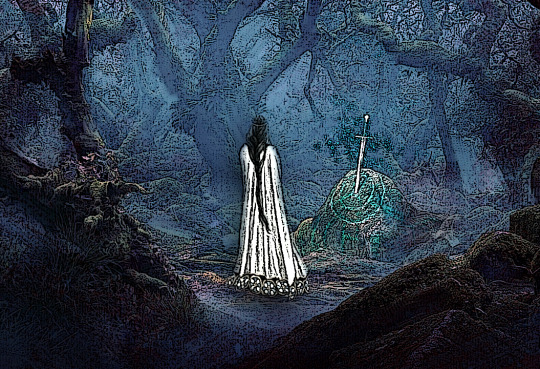
Three swords there were, forged from elemental divinity--
Mimung, the weapon of the Waelsungs, split Brynhilde's heart and sped her to the embrace of her One Eyed God, wielded after, by Vortimer, Vortigern's son, of Sinfjotli's line, now Uter's (Ohthere's) blade, grim Ohthere, of two fathers sired upon unwilling Ygerna, Vortimer (Embreis Wledig), or perhaps of Egil-Ongentheow's seed, he vies with Onela (Aelle Bretwalda) for the soul of a nation, and a woman's heart...
Tyrfing, the doom of Arngrim's brood, that brave Hervor dared the barrows of her dead father's host, scorning sulfur and brimstone to retrieve metal cast to the Host of the Dead, shaming the fallen, seeking vengeance for slain brothers, sword recovered to living light, forever cursed to take life at price of unsheathing, whose hilt Onela's (Aelle Bretwalda's) strong hands now grip upon the Plains of Eboracum (York)...
The Sword of Ares, Sarmatian iron, born of stars, a virgin priestess's flesh mated in sacrament to the Stallion, King of Heaven, both sacrificed upon the alter of flame and blood, hammer and anvil, brought to the shores of Albion in the days of Empire's might, but as centuries passed, the Eagle decayed, raising Wolf and Raven and Mare, Venaura (Gwenhwyfar), gazes upon mighty Tyr's gift of blood-gold justice, bride of death, Raven Queen and Horse Goddess, daughter of blessed Saranyu who settled her nation upon the Isle of Mists centuries gone, and centuries gone, where this child of Peteova, Lady of the Cawnur, and her Beltane lover, Palomydez (Pabo Pillar of Prydain), Alani war-lord, once commanded fire from heaven, ripping through her mother's flesh, melting sinew with lightening-struck oak, petrified water-fused stone, blade clutched in her mother's hand, symbol of defiance against Egil-Ongentheow's invading host, salvaging a tormented island, where now his sons war, Onela (Aelle Bretwalda) and Uter (Ohthere), for supremacy over Albion's clashing tribes, and in one desperate hour, does Uter send harrowing word for aid of the North, and Venaura at long-last, asks grieving Palomydez, her true-father unknown, enjoin the war and sway the battle-tide, but bitter Palomydez, stubborn yet, refuses in contempt of the southern lords he blames for Petoeva's death, sword cleaved to oak-fired stone, petrified flesh, cold memory of his bright queen's sacrifice, until this moment when her daughter, whose spirit blazes like a thousand suns from gray eyes, stands proud before his hall, voice strong above the storm lashing through the vaulted chamber, she summons Aesir and Don, bearing in her clenched fingers the ghost-banner of Old Brigantia, insignia of Iazyge, Roman, and Briton, calling the God's fire once more from heaven in a blast that blinds his court, and bades men take shelter beneath table or bench, freeing star-iron from stone, so that Venaura, Peteova's proud daughter, frees the Sword of Ares born aloft once more, into the world of men--
"In the name of the Women of Albion, and Valentia between the Walls, I summon your One-Eyed god out of Shadow, and your queen, Palomydez, summons your horse-lords to war..."
~~
Graphic, a result of me goofing around with PhotoLayers App, and ToonyTools online editing.
Verbosity, me droning in stream of conscience with highlights of how I see Uther's tale (and later, Arthur's) evolving with Gwenhwyfar's. Here, she’s based off a combo of Gwen, the daughter of Cunedda Wledig, and Gwenabwy (in my poor reverse linguistics, that’s actually Uindavia/Uendabhia), who’s the daughter of *Cawnur*, the sister of Gildas, Cywyllog, and Huail (from the delusional pedigrees of the Lives of the British Saints). Indeed, here Uther is actually adapted from the character of Ohthere (and in some bit, Amlwedd/Amlothi/Hamlet), who exists in some convoluted way, referenced as Vendel nobility, Ylfingas and Ynglingas (basically, Odin-Tyr progeny and Freyr progeny; Hamlet, and it’s predecessor Danish tale of Amothi/Ambhla-Odr, is basically another version, where Orwandil and Feng are representations of Odin/Tyr and Ingvi-Freyr. Somehow, Orwandil is also Egil-Ongentheow, which is also Angantyr. He shows up in various Anglo-Saxon genealogies as Angentheow/Angengeot). Amlothi marries both a northern British princess, and then a Scottish queen who was infamous for killing all her male suitors until she falls in love with Amlothi. Later, in Amlothi’s lay, the Scottish queen marries Wigleck, the adversary and new Danish king, and founds the line of East Anglians via Offa Anglian.
Anyone whose ever read Widsith, and Beowulf, and any of the Swedish/Danish/Norwegian/Geat dynastic sagas knows how very convoluted are the pseudo-histories and personages. At the end of the day, I love the take of Aelle Bretwalda, something of a misplaced Teutonic invader, without any lineage, and 3 sons whose names supply locations in Sussex (Cymen, Cissa, Wlencing—my Lancelot/Gwallawg ap Lleenog, of the next generation with Arthur...who’s Vortiporius in my take), as Ale (Norse version of Onela’s name), as the 1/2 brother of Uther. My whole justification here is that Uther’s name shares a parallel meaning as Ohthere—terrible/fearsome warrior.
Archaeology over the last few decades suggests something of a Swedish/possibly Geatish influx into East Anglia, from an earlier era (tentatively) based on the dating of certain artifacts, than traditionally believed. And possibly, the migration west of Mercian lines as East Anglian/Geatish pressure increased, reflecting a parallel migration of dynastic rivalries which followed them across the NorthSea board. The Sutton Hoo burial, and grave sites of mid-late 6th century/7th century East Anglia/The Norfolk-Suffolk areas allegedly have more features in common with the Swedish Vendel graves in southern Sweden than Anglian/continental Germanic burial sites of the same era. SOMETHING happened in Sweden/Denmark as well as Jutland that I believe involved late-Roman/Post-Roman Britain as well. Which leads me to wonder if the situation of the entire northern Seaboard all the way to the Baltic coast, isn’t a whole lot more complex than what our established theories reflect. Also, per poetic license, this circumstantial evidence allows me a bridge into fictional invite, proposing it’s Uther/Ohthere who becomes something of a prototype King Cnut/Canute, in my vision of his ambition, not of a Post-Roman Britain joined back with a dying Western Roman Empire which Constantinople refuses to concede, but a Britain united with the Nordic houses of Sweden/Daneland/Jutland, and reaching out to Theoderic the Great/Sexy Amalung to form some sort of Successor State confederacy, acting as a bulwark against Constantinople’s grasping influence, as well as the rising Frankish power of Clovis and the Merovingians. There’s reports Theoderic’s court of Ravenna hosted a Swedish king who’d sworn off his countrymen (Radulph—some scholars think he may actually be the personage upon whom Hrolfr Kraki was based), as well as Theoderic harboring, like his 18th century presidential doppelgänger, Thomas Jefferson (who was forever fascinated by the Western mystique of the American frontier and her indigenous peoples), something of an enlightened interest in collecting whatever history or knowledge related to northern tribal peoples, like the (mistaken, but heavily advertised) notion of Geats and Goths sharing a common root heritage.
This, This warped version finds inspiration from not just from the classic Brithish manuscripts or epics of Arthur, but combines Nordic legend/saga sources with late Roman figures synthesized with British/Germanic/Nordic figures. Story of Ongentheow and his sons, for starters. I have 2 notebook pages full up in finest logic tree form, like a jungle of neurons, detailing my convoluted interpretations and parallels of historic personages, and legendary/literary.
Lastly, Something about Vortigern's geneology always bothered me, especially in his kinship with The Jutes, Hengist and Horsa. A piece submerged or missing, that made me wonder if he wasn't only British, but as with so many high-ranking military officers in the early 5/mid-th century, perhaps also shared some Germanic/Teutonic lineage, which would explain his partiality to the Jutes, and their willingness to serve him in Britain at his invite. It’s recorded (in not very reliable sources), Vortigern’s father is a Vitalinus or Vitalis. A solidly Latin name, which shares a wonderful synchrony with Fitelis, the modified version of Sinfjotli, the son of Sigmund and Signy Waelsung, which relates back to the whole Brynhilde/Sigfrid/death of the Burgundians/ doom of Attila thread.
I’m actually just partial to Wotan and his symbolism with changing eras of history—war/rebellion/evolution/revolution/enlightenment. I also seem inclined to a symbolism of male characters as something like representations of that iconography, while my female characters act as mediums of inspiration for social/political reform, and logic/temperance/challenging the notion change only comes through violent upheaval. In lieu here, is a young Gwen, educated in Rome, as physician (of course...she does tie to Caroline Eleanor Graham later in preRev Paris), as ruler-philosopher, and yes, as a warrior in the style of nomadic horsewomen (how I bring in the character, Alardin as her tutor in these studies through her formative years exiled from Alba/Caledonia after her mother’s death). I hate the warrior queen motif. Not that my perspective alleviates gross anachronism, but I’d rather suggest she’s a queen, or at least, per the tradition of Caledonian tribes around the Walls, it’s through marriage she conveys the right of rulership to the man she eventually selects as her husband. Until then, she rules/advises her father and older brother when her father invites her back from Rome finally. And later, when Uther’s wars require the companies of the Votadini (her tribe), she’s left ruling in her father/brother’s stead, until Uther asks for her intervention, to summon the Pictish tribes of the far north, and Pabo Post Prydein’s Alani heavy cavalry, who occupy the area of Rheged, I place in NW Cumbria and SW Scotland/Galloway-Dumfries. Rerigonium looks an awful lot like an inspiration for Rheged, IMHO. Also, oddly, according to the Lives of the British saints, Pabo shares some sort of weird root with Palomides (?.). So, I’d rather suggest, Gwen is a woman who becomes a queen, from a family of Romanized-buffer state Caledonians, and as any woman in a position of influence, raised in a volatile era, and volatile province, essentially defined as *frontier zone*, I’d rather think she was raised to be competent, and strong-willed, and perhaps, more talented/unconventional/resourceful than what might be expected in a more pacific time. As I would expect of other women, and their men as well—British/Roman/or Germanic-Nordic...
Anyway, as the whole tragedy of Waelsungs, the Burgundians, and later Britain ties back, according to the Eddic poems, and Wagner, to that tale of Andarvi’s gold, Otter, and a neck-ring from that cursed were-gild which comes into Gudrun’s hands, I have Gudrun as a grieving Abbess residing in Rome, the patron to whom Gwen is sent to be educated as a girl. They don’t have a good relationship at first—Gwen, a rebellious girl who hardly knew her mother, and resents her father for sending to a college of widowed and bitter women, and Gudrun, who mourns her daughter, Swanhilde, slaughtered in an act of betrayal, and now, lives lay to see her son, ERP/Hyrp, take the throne of Caesar. Don’t ask how, but legends say, Gudrun does have a son named ERP/Hyrp. Somehow, Erp/Hyrp relates to Eadowacer, and that name is a version of the eponymous Odovaver/Adavacrius who deposed the last emperor in 476. He ties in with the story of Gwen, and Theoderic the Great as well. Anyhow, that cursed treasure with it’s cursed neck-ring sits in a convent in a quite, genteely decaying corner of the old Capital. No one wants to touch it b/c it’s cursed, and by this point of Gwen’s maturing to a young, precocious woman, she knows the legacy and taint it has upon the Abbess Gudrun she’s come to love as her mother. So, she decides to enlist the best street gangs of the convent’s local neighborhood, various carpenters/construction crews/artisans/as well as river merchants who want a cut of profit, and retain their own armed guards, to basically revive the convent’s local marketplace, founding their local agricultural coop/and vendor sites, as well as establishing a neighborhood hospital (based of St Galla’s, I think), and to add one more twist to Wotan’s cursed treasure, she takes the neck ring, and has it melted/redrafted into surgical implements which, to her delight, NEVER rust. And have amazing antibacterial properties...as some metal alloys are known to possess. Anyway, that’s the same woman who, rather than Uther or Arthur (her son, by Uther and Theoderic), who pulls the Sword from the Stone, the Sword which took her mother’s life, if that made any sense, up above, to mend a dynastic feud of Northern British houses, which has embroiled her biological father (Pabo) and her acknowledged father, Cunedda, since Gwen’s mother sacrificed her life to fend off an invasion of Swedes when Gwen was a child. It’s the moment Gwen realizes she has the aptitude and the attitude to sovereignty in interests of her people, and claims rule of Valentia, that troublesome province of Count Theodosius dating back to 370AD, which has confounded modern scholars as to where Valentia was located. I place it between the Wall of Antoninus and Hadrian, to include the regions north and south of each those boundaries as well. Thus, she is, rather like Amlothi’s Scottish queen (no Scotland in late 5th/early 6th c...), The Queen of the North (ah, GRRMartin and HBO, I’ll never forgive you for Season8), and rallies the discordant tribes of the Pretani/Picts, and the Caledonians (those Lowland and Scottish Border regions) to Uther’s aid, outside of Eboracum. Which is my draw from GeoffreyofMonmouth, and the HistoriaBrittonum, of Battle 8/The Battle Guinnion/TheWhiteFortress (don’t ask, but root words of Eboracum aside, either as *yew tree*, in the British, the Latin root of *eburos* is ivory. And if you’ve been to York, they have those lovely white-trunked trees everywhere, and its Walls, albeit dating from the MiddleAges, must have been at least as magnificent, indestructible, and...white, even by the later quarter of the 400s AD. One of my favorite cities, and hope to back when the world’s not so crazy...). How the dynasty of Eleutherius and York/Eboracum becomes occupied by Teutonic forces, you ask? Ties with Germanic/Teutonic royalty, of course, but resolving that takes up way too much precious Tumblr space already.
Rambles done, other than to add, the description of Cath Goddeu/The Battle of the Trees, from Welsh poetic sources, makes for wonderful mythic depiction of the Men of the North, and their Queen, advancing with a rising storm we all know is the Wild Hunt. And in the case of Gwen bearing the Sword of the Sarmatians/Iayzyges that had once belonged to the company of the long dead Artorius Castus, and his Brigantian Queen, who herself, once united a warring island in its desperate hour, Venaura’s actions have roused the old Guardians of Albion, the ghosts of Sarmati and their horse-lords, riding with their Alani scions of Rheged, in the name of the Women of Albion. My nod to William Blake, as Nemiane (my late 2nd c Romano-Brigantian military surgeon/Artorius’s lover), Gwen, and Caroline—the Scottish lady physician who becomes Jefferson’s lover in 18th c Paris, all find some reflection in the themes of Blake’s monumental mythicism. Thus, I believe we start this work with Blake, writing Vision of the Women of Albion...
1 note
·
View note
Link
* * * *
It’s very strange to think of Joe Biden as a world-historical figure. For decades, he seemed to me to be a bit of an irritating blowhard who rarely took the chance to edit himself. He was a classic slap-on-the-back backroom pol, with an everyman-on-the-train vibe, who loved the ornaments of public office, and that was basically it.
Washington will always need people like Biden, and he played the part well, but he was hardly a star. He rarely inspired, he made cringe-inducing gaffe after gaffe, his vanity required him to cover up his baldness with what, for a while, looked like a painful rice-paddy of plugs, he plagiarized a speech so obviously and crudely he almost begged to be caught, and despite his rep for retail politics, was terrible at campaigning for president. In 2008, he quit after Iowa, with one percent of the vote.
His big moment came when Barack Obama picked him as his veep. And the choice of Biden was specifically designed, it seems to me, to ruffle no more feathers, and to assuage white working-class discomfort with a young, inexperienced black guy with a funny, foreign-sounding name. Even at the time, it felt to me that Biden’s acceptance speech was fine but not exactly great — but what worked nonetheless was his persona: “It’s hard not to feel affection for this scrappy old guy — especially if you’re a Catholic,” I wrote. “This was a very culturally Catholic speech, especially at the beginning, and Biden will speak to people who might be leery of this young African-American. It was also focused on middle class economic anxiety and spoke about it in intimate ways that voters will immediately understand.”
Twelve years later, this guy is even older and less scrappy but still has the same core appeal: that old Irish dude who can go on a bit but has a heart of gold and hasn’t completely disappeared into the left-liberal elite. The drastically curtailed Covid campaign was a godsend in retrospect because it removed countless opportunities for him to get in his own way, while very successfully projecting and burnishing this image. Yes he could get a bit Abraham-Simpson-y at times, but I confess I began to find that a little comforting after a while, in the era of Trump. The combination of decency, vulnerability and humanness became even more potent up against an indecent, inhuman con-man. It became the stutterer versus the monster.
And Biden’s core appeal, as he has occasionally insisted, is that he ran against the Democratic left, and won because of moderate and older black voters with their heads screwed on right. He was the least online candidate. For race-leftists like Jamelle Bouie, he was part of the problem: “For decades Biden gave liberal cover to white backlash.” For gender-warriors like Rebecca Traister, he was “a comforter of patriarchal impulses toward controlling women’s bodies.” Ben Smith a year and a half ago went for it: “His campaign is stumbling toward launch with all the hallmarks of a Jeb!-level catastrophe — a path that leads straight down … Joe Biden isn’t going to emerge from the 2020 campaign as the nominee. You already knew that.” The sheer smug of it! And the joy of seeing old Joe get the last laugh.
It’s worth recalling the obloquy the woke dumped on Biden in the early stages of the race because this will surely be a battle line if he wins the presidency, and we will have to fight for him and against them if we are not going to sink into deeper tribal warfare. He is one of the last vestiges of the near-extinct rapport between white working-class voters and the Democrats, and if he wins next week, it will be because he has wrested older white voters from the Republican grip, and won white women in a landslide (unlike Clinton), even as his support among blacks and Latinos may come in slightly behind Hillary’s.
Biden ran a campaign, in stark contrast to Clinton’s, focused not on rallying the base around identity grievances, but on persuading the other side with argument and engagement. If you believe in liberal democracy — in persuasion, dialogue, and civility — and want to resist tribalism, Biden may be our unexpected but real last chance. And in this campaign, he has walked the walk.
His core message, which has been remarkably consistent, is not a divisive or partisan one. It is neither angry nor bitter. Despite mockery and scorn from some understandably embittered partisans, he has a hand still held out if Republicans want to cooperate. In this speech at Warm Springs, where Biden invoked the legacy of FDR, you can feel the Obama vibe, so alien to the woke: “Red states, blue states, Republicans, Democrats, Conservatives, and Liberals. I believe from the bottom of my heart, we can do it. People ask me, why are you so confident Joe? Because we are the United States of America.”
And while he has promised a deep re-structuring and redistribution in the wake of Covid, climate change, and destabilizing inequality, he has done so in pragmatic, rather than ideological, terms. Against the surreal extremism and divisiveness of Trump, he has offered moderation and an appeal to unity. Look at the careful balance he has struck on the protests against police misconduct this summer: “Some of it is just senseless burning and looting and violence that can’t be tolerated and won’t, but much of it is a cry for justice from a community that’s long had a knee of injustice on their neck.” We need both these impulses, if we are to extract real reform from distorting rage, and make it stick.
He is not perfect, of course. I suspect he is naive on some questions. He realizes, does he not, that when he uses the term “equity” rather than “equality”, with respect to race, he is using code for the crudest racial discrimination. He surely knows that critical race theory is not about being sensitive to the pain of others, but about seeing the U.S. as no less a white supremacy now than under slavery, and liberal constitutionalism as a mere mask for oppression of non-whites. He knows that the Equality Act eviscerates the religious freedom he has previously championed, does he not, and folds the category of sex into one of gender, jeopardizing at the margins both gay and women’s rights? And it should be troubling, it seems to me, that, when confronted with the fact that his son, Hunter, is corrupt in the classic, legal, and swampy way, Biden refuses to see anything wrong with it at all.
But these are quibbles in the grand scheme of things. And it is striking, as David Brooks noted this morning, how deftly Biden has walked through a field of culture war landmines and not see one go off. That has taken discipline — and Biden has shown that he can exercise it. Maybe he learned it from Obama.
His closing message has been about healing — from the wounds of Covid, economic crisis, and resilient racism. And if there is one thing Biden really knows in his heart and soul it is healing. Recovering from the loss of a wife, a daughter and a son requires a profound sense of how to take the hits that life can bring, how to stay strong while accepting vulnerability, and how to move slowly forward.
This is how he put it last week, as he related to the isolating, desolating casualties of Covid19: “Alone in a hospital room, alone in a nursing home, no family, no friends, no loved ones beside them in those final moments, and it haunts so many of the surviving families, families who were never given a chance to say goodbye. I, and many of you know, what loss feels like when you lose someone you love, you feel that deep black hole opening up on your chest and you feel like you’re being swallowed into it.”
I have felt that way for four years now. What I grieve is an idea of America that is decent, generous, big-hearted, and pragmatic, where the identity of a citizen, unqualified, unhyphenated, is the only identity you need. I miss a public discourse where a president takes responsibility even for things beyond his full control, where the fault-lines of history are not mined for ammunition but for greater understanding, where, in Biden’s words, we can once again see the dignity in each other. I am not a fool, and know how hard this will be. But in this old man, with his muscle memory of what we have lost, and his ability to move and change in new ways, we have an unexpected gift.
“I’ve long said the story of America is a story of ordinary people doing extraordinary things,” Joe Biden said last week. Well, ordinary old Joe, it’s your turn now. Do the extraordinary.
ANDREW SULLIVAN
THE WEEKLY DISH
1 note
·
View note
Text
Editor's note: Megan Rapinoe gave her brother, Brian, a birthday shout-out on national TV after winning the 2019 Women's World Cup, the Golden Boot as the tournament's top scorer and the Golden Ball as its top player. Here is the story behind their complicated relationship.
DAYS BEFORE THE first game of the 2019 Women's World Cup, Brian Rapinoe jokingly texted his sister, Megan Rapinoe -- co-captain and star midfielder for the U.S. women's national team: "Megs, breaks my heart that you couldn't fly me out for an all-expenses-paid trip to France." She shot back: "Oh yeah, so sad I couldn't pamper you for a month in France."
An hour before kickoff against Thailand on June 11, the rest of the Rapinoe family found their seats in the Stade Auguste-Delaune in Reims; Brian charged his ankle monitor and rounded up the other guys in the dormitory at San Diego's Male Community Reentry Program, a rehabilitative program that allows an inmate to finish the final 12 months of his sentence taking classes or working jobs outside of prison.
The MCRP common room might not be France, but it's a vast improvement over solitary confinement, where Brian has watched Megan play in the previous two World Cups. He sat on a couch in his red USA jersey, watching on a 60-inch flat-screen, and felt "f---ing great." He had accomplished a major goal for himself: to get out of prison in time to watch his kid sister play in her third World Cup.
Every time the U.S. scored, the room full of men cheered loudly. Nobody there thought the U.S.'s 13 goals against Thailand and exuberant celebrations after each were done in poor taste. "This is what soccer should always be like," one man said.
"It's the World Cup: There's no f---ing holding back," 38-year-old Brian says. "This is every four years."
And his sister didn't hold back. When Megan scored goal No. 9 for the U.S., she sprinted to the sideline, spun around twice and then slid to the ground for a foot-kicking celebration. As the camera zoomed in on her, one of the guys yelled, "Holy s---, it's Brian!"
He has the same face as his sister.
The face, the charisma, the wit, the tendency to burst into song: In so many ways, Brian and Megan are alike. But they are also a study in contrasts: At 15 years old, Brian brought meth to school and has been in and out of incarceration ever since. At 15, Megan played with her first youth U.S. national team and started traveling the world. As a young inmate and gang member, Brian was inked with swastika tattoos -- an allegiance to white supremacy that he now disavows; as a professional soccer player, Megan was the first prominent white athlete to kneel to protest racial inequality.
Despite their different paths, the brother and sister have stayed close through letters, phone calls and texts. "I have so much respect for her. And not just because she's the s--- at soccer. It's her utter conviction in the things that she believes in and the stances she takes against injustices in the world," he says.
"I was her hero, but now -- there's no question -- she is mine."
Megan, right, "worshipped" Brian when they were children. Brian, who is five years older, introduced her to soccer early on.
GROWING UP, MEGAN and her twin sister, Rachael, adored Brian. He was their hero, the charismatic jokester who did Jim Carrey and Steve Urkel impressions and danced ridiculous dances. The girls had three other siblings, but he could make them laugh harder than anyone else could. He taught them how to catch crawfish in the creek, walked them to the patch of field across from the church and taught them soccer until his mother called them in with a two-finger whistle. In the side yard, he set up cones and showed his 4-year-old sisters how to dribble the ball -- with the inside of the foot only, with the outside of the foot only, left and then right. "And it wasn't like he drilled them. He let them do it their own way," says his mother, Denise Rapinoe, her voice cracking. "It was just the cutest thing, and we remember it so clearly."
In elementary school, like her brother, Megan was rough and tumble, and spoke her mind. Her second-grade teacher's aide pulled Denise aside to relay the following scene: Megan came in from the playground, walked into the classroom, stood with her arms on her hips and announced, "Brian Rapinoe is my brother, and I am just like him!"
"I worshipped him," Megan says. "He played left wing, so I played left wing. He wore No. 7; I wore No. 7. He got a bowl cut, so I did too."
So when Brian first started smoking marijuana as a 12-year-old, a 7-year-old Megan was confounded. Why was he doing that? Brian still doesn't know for sure. "Right from the start, I was hooked," he says. "One drug always led to the next." He was also attracted to the "fast life," he says, to getting high, to driving nice cars and to the "hype around this lifestyle." She wanted him to stop, and she was still young enough to think there was something she could do. Three years later, when her parents sat her and Rachael down and told them the police had arrested Brian for bringing meth to school, she cried. He was going to juvenile detention. She did not understand: What had happened to her big brother?
"For many years, Megan and Rachael were pissed as hell," Brian says. "They still loved me, they still let me know they were there for me, but they were like, 'What the f--- are you doing?'"
"My mother is the queen of the family," Brian, left, says of Denise Rapinoe, right. "I just love her so much. I'm such a baby when it comes to her."
BY 18 YEARS OLD, Brian had moved on to harder drugs -- heroin, specifically -- and he became more reckless. He was charged with car theft, evading arrest and a hit-and-run while driving under the influence of drugs -- and now, as an adult, his juvenile detention days were over. He was sent to prison. Within months, he aligned himself with the white prison gang and was inked with Nazi tattoos. A swastika on his palm; lightning bolts on his fingers, sides and calves
These tattoos devastated his family. "The prejudice, the racism -- it was so against the way he'd been raised," Denise says. "He wasn't that kind of kid. He was kind, his nature was so loving."
To Brian, the swastikas weren't about prejudice and racism at that point -- they were about heroin and survival. To support his addiction, he needed to be, in his words, "an active participant in prison culture." The California prison system was segregated. That meant Brian lived strictly among the white population. "You come in as a kid, and there are these older dudes you think you respect, spouting ideas, and you kind of listen," Brian says. "I developed a protect-your-own mentality."
He tried to explain that to his mother. The gang was a family, he said; it was a place to belong. "I told him, 'This is not who we are,'" Denise says. "'This is not who you are.'"
Megan was as heartbroken as her mother. "I thought [the tattoos] were horrible," she says. "I still think they're horrible. I could rationalize them: I understood that when he first got in there, he was searching for identity, trying to survive."
But the big brother she had worshipped? It felt like she had lost him.
As a young player on the U19 U.S. women's national team, Megan wore the No. 7 jersey. It was the number Brian wore when he played soccer.
BRIAN BECAME HEAVILY involved in gang life and racked up charges while doing time: possession of drugs, possession of a deadly weapon, three assaults on other white inmates. He spent eight of his 16 years in prison in solitary confinement for this behavior. By 2007 -- as he was turning 27 years old -- he was transferred to Pelican Bay State Prison in Northern California, the state's only super-max-security prison.
While general population is segregated, solitary confinement is not, and every inmate gets one hour out of his cell to walk the pod. Here, the protect-your-own thinking began to fall away for Brian. "You start relating to people beyond your hood, your area, your color," he says. "It doesn't take long before you start talking with each other, seeing how much you have in common. Back there, it's just you in the cell, and the man next to you is just a man himself."
There's no radio, no television in the individual cells in the hole. Sitting in a cement box, counting the number of holes in the perforated door is "hard; it's definitely hard," he says. "But you find a way to escape. You've got books, you've got writing, some guys draw. And you develop these relations with other people, these connections."
Three times a week, inmates also get three hours outside, albeit in his own cage. "In the yard, you start talking [to other guys] -- sports, music, my sister is always a big ice-breaking conversation. You say [to them], 'When we go back in from yard, you can look at my pictures,' or you say, 'Here's something I wrote.' Maybe you become good friends -- like me and Monster did."
Monster, also known as Sanyika Shakur, is a black nationalist and the author of the bestseller, Monster: Autobiography of an LA Gang Member. He and Brian were on the same pod for two years. Using a line and a weight, they'd send each other long letters from cell to cell, fishing for them beneath the doors. Brian shared the song lyrics he wrote; Monster let him read drafts of his articles and essays. For years, Brian had been a serious reader, consuming everything from the classics, to books about social issues. He'd read The New Jim Crow and learned about how police disproportionately search black men and arrest them for nonviolent drug offenses, and how the War on Drugs decimated communities of color.
"He taught me what it means to be racist," Brian says, "and he taught me what it means not to be racist."
By 2010, the now 30-year-old had a new understanding of what the white supremacist insignias represented. He had his face tattoos lasered off. The swastika on his palm became a spider web; the Nazi lightning bolts became skulls. He did not want any racial insignias on his skin. They did not reflect who he was. But he was still using heroin -- and the next year, he was arrested for selling it.
Brian was behind bars once again -- this time at Donovan State Prison in San Diego.
When Megan scored in the 2011 Women's World Cup against Colombia, she seized the moment and sang Bruce Springsteen's "Born in the USA" -- something, people say, Brian would do.
IN JUNE 2011, Brian had something new to talk about during his hour walking the pod: His little sister was playing in her first World Cup -- and he was going to get everybody to watch.
The 15-inch television was at the other end of the hallway, some 50 yards away. He built a tower out of 60 books and tied them together with torn sheets. Sitting on top of it, he could just see the TV through the window in the door. In an early game against Colombia, Megan roped in a goal, then immediately sprinted to the corner flag, grabbed a cameraman's mic and sang Bruce Springsteen's "Born in the USA." The guys got a kick out of this because Brian was the singer on the pod, and this flamboyant corner-flag serenade was so like him.
Days later, ahead of the quarterfinals against Brazil, all 30 cells on top and all 30 cells on bottom were watching, everybody perched at their doors. Megan -- young and audacious with her signature short blonde hair -- subbed in at the end of the game, and in extra time, sure enough -- boom! -- she sent a 50-yard cross-field ball to U.S. forward Abby Wambach, who headed it home to tie the game. "We were going wild," Brian says. "We were yelling and pounding on the doors."
Later that night, on the prison pay phone, Brian talked with his mom. She described the end of the game, how Megan, having just experienced the craziest, most awesome moment of her life, walked to the stands and stood there, searching through the some 20,000 faces for her mom's. Denise put her two index fingers in her mouth and let out her trademark whistle -- the same whistle she had used when they were kids. She had to do it a second and then a third time before Megan could hear her. Megan tapped her ear. "She was letting me know she heard me," Denise told Brian at the time, choking up -- which made Brian choke up a little, too. He could imagine it.
"Not being there -- it hurt," Brian says.
Another four years passed. This time he was in solitary confinement because of his violent record at the Vista Detention Facility, a lower-security prison, in San Diego County -- and Megan was headed to Canada for her second World Cup. The women would end up winning it all, the first time the team had done so since 1999.
"That was the hardest," Brian says. "I was super happy for Megs and super sad for myself. I fricking love my family so much. They were all there. It was like, f---, man, I'm like not really even a part of this. Yeah, I got a lot of support for her in prison, but when the game is over and the ruckus has died down, I'm sitting in my cell. I'm not there to give her a hug, I'm not there to witness it, I'm not there to be a part of it. It's just another thing in their lives that I'm missing out on. What the f--- am I doing with my life?"
Brian was almost 35 years old. He had spent more than half of his adult life incarcerated.
After Megan kneeled during the anthem in 2016, a former prisonmate called Brian to commend her actions. "What your sister is doing -- it means so much," said Sanyika Shakur, a black nationalist. "She is standing up for people who don't have a voice."
ON SEPT. 1, 2016, when San Francisco 49ers quarterback Colin Kaepernick kneeled during the national anthem to protest police brutality and racial profiling, Brian was briefly out of prison -- although he was still using heroin. Three days later, Megan kneeled in support while playing for her club team, the Seattle Reign. Then, while playing for the U.S., she did it again.
Brian saved the newspaper article with the picture of her solemn, angled-down face. He watched the YouTube videos of the coverage. He thought, Hell yeah. He also read the comments: "If she was on my team, I'd knock this idiot out. She should be banned from the national squad for life. Such disrespect." He understood that she would anger people, understood the impending fallout. He knew that enrollment in her summer camps and sales of her clothing brand, Be Your Best You, would go down. He thought, My sister is brave; my sister is bad ass.
Like every time before, Brian's freedom proved to be short-lived. By July 2017, he was back up north in Pelican Bay. Back to the regimented, day-to-day prison routine. Where tomorrow is the same as today. His whole life had been a habitual rut; Megan's anthem protest felt like the opposite of that. Her stance showed him there is a way to put a foot down on something in life, in spite of the fallout that will come.
Not long after, he had a breakthrough. His cellmate was helping him inject heroin into the back of his neck when the needle broke. "I freaked out on him, really lost it," Brian says. "And he said to me, 'Look at how you are acting right now.'" And for whatever reason, those words torpedoed into Brian and transformed into personal questions he asked himself. Your whole happiness and peace of mind is focused on this dirty-ass hypodermic needle: Is this what you want? Do you want this cell and this bulls--- powerful persona to be all you are?
He thought about the seven murders he'd witnessed out on the yard. He thought about his own knife fights -- about everything he'd done and been a part of -- just so he could continue to do heroin. He thought about Megan. Look at all she's done with her life -- look at what you've done with yours.
That's when he finally decided he was ready for change. He enrolled in the new self-improvement and rehabilitation classes the California prison system had begun to offer. Each completed class reduced time from his sentence.
Most importantly, after using and selling drugs for 24 years, Brian quit -- and he's been clean for 18 months.
"If I do drugs," he says, "I will go back to prison. I didn't believe that for a long time. Now, I believe that -- I don't ever want to go back."
Shortly before his first day of school at San Diego Community College, Brian met up with a friend from Pelican Bay, Cesar, who is also taking classes. "From the Bay to the books," Brian says. "I am so stoked to begin."
TODAY IS BRIAN'S first day at San Diego City College. As part of the Male Community Reentry Program, he's taking classes to finish up the final year of his sentence, and he has some butterflies. "It's been a long time since I've gone to school -- even when I was in school, it was juvenile hall -- I've never taken anything except regular math. I've never even taken algebra.
Plus, he says, it's a little unnerving to sit in a classroom with 18-year-olds whose experiences have been drastically different from his own. He's self-conscious about his tattoos -- particularly his neck tattoo, SHASTA, inscribed in large gothic letters, the name of the county in which he grew up. "These tattoos, I freaking hate them," Brian says.
But he also knows those tattoos could matter again in the future. He wants to get involved in the juvenile delinquency program, wants to talk to anybody who might be about to jump off the same ledge he did. "These tattoos, it's gonna get their attention," he says. "It's like, dude, you don't think I know what I'm talking about?
"I want to make a difference," he says. "I want to be like Megan."
He had "a really fricking deep conversation" with her about two months ago. They talked about racial profiling; they talked about police brutality; they talked about what Megan's kneeling meant to both of them. Megan saw that in spite of their very different paths, they'd arrived at similar conclusions.
"My brother is special," Megan says. "He has so much to offer. It would be such a shame if he left this world with nothing but prison sentences behind him. To be able to have him out, and to play for him, and to have him healthy, with this different perspective that he has now: This is like the best thing ever."
While Megan is in France, she and Brian text daily -- with game thoughts, encouragement and shared excitement.
"This is one of the most exciting things I can even remember ... just everything really, you, the school, the program," Brian texts.
She replies: "People always ask me what got me into soccer ... your wild ass of course."
"Luckily I played a cool sport. What if I'd been into arm-wrestling or something."
"Oh lawd, yea you really set me up."
"Get some sleep -- love you."
"Lovee you Bri! Let's f---ing go!"
-- Freelance writer Gwendolyn Oxenham is the author of Under the Lights and in the Dark: Untold Stories of Women's Soccer.
3 notes
·
View notes